












The number of different fine arts each advisory got to participate in on Fab Fest.
Votes that passed Senate Bill 17, which prohibits DEI offices in public education institutions.
Junior Cassidy Golden and her APES class trek through the forest, observing the switchgrass, yellow Indian grass, little blue stem, and big blue stem grasses, which are the four main types of grass in Blackland prairies. Red shoulder hawks, beavers, turkey vultures, and Carolina wrens flock about as Cassidy tries to record it all in her notebook.
Environmental projects have been happening all year both on campus and around Dallas through Upper School science courses. From restoring prairies to testing for water contamination, students explore ways they can make an impact in the Dallas community and be more environmentally conscious.
“My hope is that students walk away more informed consumers and also have an appreciation for the natural world,” Crowley said. “Because if you don’t have that appreciation, you’re not going to be interested in saving it.”
The class partners with the Trinity River Audubon Center (TRAC). During monthly field trips to the nature reserve, specialists at TRAC teach students about the restoration process of a prairie. So far, APES students have propagated plants and placed them back into the habitat for restoration, removed invasive species to increase plant diversity and introduced native plants.
“We have amazing instructors at TRAC who will go and take walks through the prairie, and they will help us identify the different plants and animals,” said junior Cassidy Golden.
APES hopes to implement the restoration experience they have gained at TRAC and apply it to

the “pocket prairie” on campus at Hockaday. The 2,500 square foot prairie lies behind the softball field.
“There is a lot of potential back there. The hope is to draw some sort of wildlife to our campus,” Crowley said.
Crowley created her Conservation Biology class, a semester course, to delve deeper into questions students have and the resultant projects rather than being restricted to AP curriculum. Conservation Bio students began by researching the flora that inhabitants a Blackland prairie, the ecosystem that existed before Hockaday. They then visited the Clymer Meadow Preserve, an intact Blackland prairie, and talked to specialists about how they manage their property.
After learning about seed

propagation, the class created a project proposal, picked species of flowers that were host plants for butterflies and chose grasses that would make good habitats for birds in the winter. Crowley hopes future Conservation Bio and AP Biology classes will visit the area and see what was able to grow.
Environmental Chemistry is a first-year Chemistry course designed to give students a realworld application of traditional chemistry topics.
class before collecting data in the West Dallas community.
Last year, the Environmental Chemistry class took water samples from the Wesley Rankin Community Center and a few of the community members’ homes, and from their data concluded there was an issue with water quality. The class then created brochures and posters to communicate their findings to the West Dallas community.
“ My hope is that students walk away more informed consumers and also have an appreciation for the natural world.”
Jessie Crowley APES Teacher
“The big thing about this course is that it is more about experimental design and real-life application of chemistry,” Dr. Jen Fore said. “They are still learning fundamental chemistry, just through a different lens.”
The class partners with the West Dallas community, which has historically been an area of pollution caused by a lead smelter and concrete factory.
“We are focusing on West Dallas because it is in an underrepresented area where there are a lot of factories that are close to neighborhoods with lots of children and families,” sophomore Allie Gerber said. “This has caused health problems for these families that have gone back generations, such as asthma.”
Students study air and water in
This year, the students have taken one field trip to West Dallas to get a sense of the community’s needs. Although they have not yet started their project, they plan to build on the previous year’s findings and test specifically on where in the community this issue is most prevalent.
“Last year, it was more like, is there an issue?” Dr. Fore said. “This year we know there is something going on, so can we isolate the issue? There is a lot of chemistry that happens in water.”
Other Hockaday science classes visited the Hockaday bees, an initiative started by Laura Day, a leader in the Institute of Social Impact. All proceeds from the honey sold at the bookstore goes back into beehive maintenance, contributing to Hockaday’s continued efforts for conservation on campus.

Hockaday’s Upper School and Middle School Choir will be performing a joint concert on Feb. 28 in the Nancy A. Nasher and David J. Haemisegger Theater.

Winter Break is coming up soon. Students will enjoy a four-day weekend to relax and enjoy a break from stress and tests.

The Fine Arts Board is hosting a coffeehouse March 2 in the Blackbox Theater. Hockaday and St. Marks students will showcase their artistic and creative talents, such as singing and improv.

Hockaday will participate in the 2024 Colloquium Feb. 21 at Jesuit Preparatory School. Students will present essays composed about books like “1984” to students from schools across Dallas, hoping to foster discussion about literature.


The Upper School Fine Arts Board (FAB) hosted its very first FAB Fest during retreat week on Jan. 17. In a single day, performers and artists from theater, choir, dance, studio art, film and much more came together to showcase their unique talents and engage Upper School students in fine arts across campus.
Fine Arts Board chair Ava Shipp explained that the idea took form in the summer of 2023 and gained traction after being pitched to Head of Upper School Lisa Culbertson. It earned unanimous support from the fine arts teachers.
“I really wanted FAB Fest to increase exposure and interest in the arts within our student body and to show students that there are so many different types of art,” Shipp said.
Fine Arts Board members worked with Student Council on logistical planning, including mock schedules and budgets, with the help of board sponsors Christie Sullivan and Alex Farrior.
“Our sponsors gave us a lot of creative freedom so we could really
kick off the program with as much fine arts representation as possible,” Shipp said.
Sophomore Nadia Guevara, who performed in the dance program’s Alice in Wonderland, said being able to share her passion with Upper School students led her to appreciate Hockaday’s fine arts program more than ever.
“You get to build a community with people that you may never have gotten to engage with,” Guevara said.

“We even got to collaborate with History of Arts and Music teacher,


Ms. Griffiths, who gave us some awesome music to accompany our choreography.”
As part of the festival, the entire Upper School student body participated in visual and performing arts workshops to get an appreciation for the diverse fine arts offerings at Hockaday.
“We understood that students don’t always have the opportunity to immerse themselves in all that
Hockaday arts has to offer and that a full day to experience the variety of fine arts on campus is super impactful,” Shipp said.
The program serves as a potential long-term enhancement to existing FAB programs like “coffeehouses” and “lunchboxes,” where students have opportunities to demonstrate their talents in less structured environments.
“Our main goal was to increase visibility of the wonderful work being done in Hockaday’s arts departments because there’s so much creativity happening around us, and my goal was to showcase it at the festival,” Shipp said.
FAB members received strong feedback to continue their efforts via post-program surveys and hope to make it even better going forward.
“Since this was sort of the pilot year for FAB Fest,” Shipp said, “We envision including different performances, workshops, other divisions of Hockaday and even teaming up with other schools like St. Mark’s to expand it and take it to the next level.”


State Senate Bill 17, which imposes a state ban on diversity, equity and inclusion (DEI) offices, initiatives and training at Texas public universities and colleges, went into effect Jan. 1.
The bill was signed into law by Gov. Greg Abbott in June, after successfully making its way through the Texas House and Senate. Though Texas’ new law bans DEI offices, it does not affect student organizations, academic courses or student admissions.
Over the years, DEI offices have developed into a pillar for colleges and universities across the U.S., with efforts to amplify campus diversity and ensure success for all students. DEI offices have a wide range of functions: they organize programs to aid underserved or marginalized students professionally, search for diverse faculty candidates, and create initiatives and centers that benefit LGBTQ+ students, ethnic and racial minorities, and students with disabilities.
According to the Texas Tribune, when laying out his version of the Senate bill on the House floor, Representative John Kuempel stated that there is scarcely any proof that DEI initiatives have bridged the gap in minority student achievements or the recruitment of minorities. Additionally, critics accuse DEI programs of disseminating left-wing ideology onto students and faculty and argue that such programs emphasize inclusivity and diversity over merit and achievement. They further argue that the elimination of these programs would result in millions in taxpayer savings.
Yet, Texas students and faculty members have resisted these efforts, asserting that DEI offices and initiatives should be retained to enhance the inclusion and success of all people on campus. Some critics have stressed that without university sponsorship, an overwhelming responsibility will fall onto students to plan DEI-related events.
Dr. Tracey Tevis, the Director of DEI at Hockaday, said that attending a small, private institution made her fall in love with DEI work, and it’s disheartening to know that students may not have the same opportunity that she did. She believes that DEI enhances the sense
of welcomeness students feel and has since added a B at the end of DEI for belonging. However, she also believes people are entitled to their own opinions.
“The wonderful part about DEIB is that we’re not trying to make you necessarily change your mind,” Tevis said. “Part of it’s about hearing a person’s perspective and understanding where that person is coming from.”
In addition, Tevis said she thinks it’s also important to look at DEI offices through a holistic lens and realize that they go beyond benefitting people of color.
Council, represent student DEI interests at Hockaday and have their own perspectives on SB17.
Chemmalakuzhy said SDB promotes DEI primarily through conversationbased activities on current events in forums and “Chit Chats.” Their goal is to make students reflect on their identities and understand how this shapes their outlooks on global or national issues.
Like Dr. Tevis, she emphasized the impact of the feeling of belonging that goes alongside DEI, and how this is an integral part of any school or university.

“Being around people with diverse cultures, not just racial, but religions and socio-economic location, increases creativity, critical thinking skills and helps you learn how to have that civil discourse,” Tevis said. “The goal with a DEIB office is to make sure that we are equipping you all with the skills needed to become global citizens after graduation.”
Tevis emphasized that DEI is not just achieved by one person, but rather, it takes the work of all. She hopes students will listen to both sides of the argument regarding DEI by reading books, listening to podcasts, and talking to friends to formulate their own opinions.
“I highly encourage you all to go to things like the Dallas Area Diversity Youth Organization and go to college and independent school websites and see what these offices offer,” Tevis said.
Seniors Ashley Chemmalakuzhy, head of Student Diversity Board (SDB), and Leila Tarighi, president of Affinity

“Having discussions makes people a lot more aware about their identities and how that influences their daily life and perspectives,” Chemmalakuzhy said. “Bringing identity into the forefront and making it a part of conversation enriches the Hockaday community, and makes people think about inclusivity and belonging and how we can best promote that.”
Tarighi leads Affinity Council representatives through a variety of initiatives and by addressing student issues, ensuring everyone’s identity is represented at Hockaday. This year, Tarighi, has worked to create a Prayer Room and publish bi-monthly newsletters. She believes that Affinity Council’s DEI work transcends into the larger student body to create an uplifting environment.
“With Affinity Council, it’s about sitting at a round table, putting a face to an identifier and feeling like we are all working together in tandem on these really deep issues,” Tarighi said. As a board, we’ve aimed to curate a compassionate and empowering environment, even within an emotionally tiring space like school. It’s important to create safe spaces where students feel comfortable and confident within their identifier.”

With their leadership experience at Hockaday, both Tarighi and Chemmalakuzhy believe that DEI offices are necessary at public universities and strongly disagree with Abbot’s most recent law. Though Tarighi believes student-based DEI work will continue to thrive, efforts won’t be as productive or united without strong administrative support. She expressed that such student organizations will be somewhat restricted to their own microcosm of work and explained that while Hockaday’s DEI office was temporarily absent, Affinity Council couldn’t make as much progress on their goals.
“I still think there will be affinity groups and initiatives on college campuses, but there won’t be a sense of connection between each of them,” Tarighi said. “There’s no working together, collective effort or administrative backing; everyone will be working in their own bubble and isolated and we will lose a lot of the necessary ingredients in creating an equitable space.”
Chemmalakuzhy emphasized that the DEI ban has vast implications for college students – which go beyond life at university. She said that not only will this law diminish students’ sense of belonging, embracing of their differences and exchanging perspectives at college, but that such an educational experience will translate to when graduates enter the real world, in a negative way.
“As we’re educating our youth to go out into the world, a lot of what they’re going to do stems from what they’ve learned,” Chemmalakuzhy said. “DEI needs to be considered in the larger global context of how we are going to account for each other and accommodate each other as we’re all just living and working together.”
Chemmalakuzhy said that SDB’s goal is to embrace a wide range of viewpoints, making their activities an area to exchange ideas rather than a battleground for persuasion. Dr. Tevis reinforced Chemmalakuzhy’s stance, expressing that an aspect of DEI offices involves offering understanding to everyone, including individuals who might be skeptical or opposed to the principles of DEI.

Divorced, beheaded, live onstage
New director Jeremy Hays takes on twist on annual musical, while crew works hard behind scenes.

As as the end of the school year approaches, try some of these late-night bites to keep you going.
by Kailey Bergstedt | Editor-in-Chief & Hanna Asmerom | Web Editorith Valentine’s Day approaching, many students opt to celebrate the holiday with their friends – rather than with a romantic partner – by participating in “Galentine’s” activities. As you plan your Galentine’s celebration, we’ve compiled a list of some of the best activities.
Going to brunch is a classic way to celebrate Galentine’s. Several trendy Dallas restaurants are the perfect place to take cute pictures and enjoy Valentine’s themed food and drinks. The French Room, Edith’s French Bistro and Bistro 31 are all places worth checking out.





Stores like MYX Blend Bar and Lip Lab allow customers to create custom lipstick, lip gloss or lip balm shades. They offer interactive group experiences and allow customers to choose the color and flavor of their lip product, add engravings and name the shade. This activity usually lasts for one to two hours, depending on the size of your group, and will cost between $50 to $100 depending on the type of lip product you customize.





Having a girls’ night in is a laid-back, yet underrated, way to celebrate Galentine’s. You could watch classic rom-coms, bake something or have a potluck. Movies like “10 Things I Hate About You” and “Never Been Kissed” are staples for any Galentine’s movie marathon. The recently released “Anyone but You” is another option and is being re-released in theaters as a “Valentine’s Encore” with bonus content.

Organizing a Galentine’s baking or cooking class with your friends is a fun, hands-on experience that will create lasting memories. Places like Sur La Table or My French Recipe offer several Valentine’s themed in-store classes throughout the month of February. These classes usually range from $60 to $100 depending on the recipe and length of the class and they cover a variety of culinary skills, allowing you and your friends to try new techniques and recipes together.














Getting matching permanent jewelry is a tangible way to celebrate meaningful friendships. Several local stores, such as Love Weld and TOI & MOI jewelry, offer group permanent jewelry experiences. Prices of the jewelry will vary depending on the style and type of metal, but permanent bracelets usually cost between $100 to $150. The longevity of the jewelry can be significant, symbolizing the enduring nature of friendship.your
Stars Sydney Sweeney and Glen Powell graced movie theater screens as the main love interests in the romcom “Anyone but You.” The movie, which came to theaters in late December, is loosely based on Shakespeare’s play “Much Ado About Nothing.”
The story follows law student Bea and investment banker Ben, whose initial romantic encounter sours when Bea overhears Ben insulting her. Six months later, they reunite for the wedding of Bea’s sister and Ben’s family friend in Sydney, where they devise a plan to pretend they are a couple.
Although I do love the occasional cheesy rom-com, this movie fell flat for me in a few different ways. The chemistry, or lack thereof, between Sweeney and Powell felt awkward and insincere at times. Sweeney’s portrayal of disdain toward Powell seemed more convincing than her moments of
falling in love, leaving the overall connection between the characters somewhat unconvincing. There were a few glimpses of chemistry between the characters, but it overall felt like something was lacking.
The movie relied too heavily on the cliche “rom-com formula” and did little to offer a unique storyline or perspective. It features two of the most attractive (in my opinion) rising stars, Sweeney and Powell, as the main characters and centers its entire plot on the “fake dating turns into real feelings” trope. Even the comedic

scenes, while entertaining, often drew from familiar sources or felt overly manufactured. For example, when Bea first meets Ben, she accidentally sprays sink water over her pants and relies on the bathroom hand dryer to dry herself off. Of course, there is a reason the triedand-true formula has stuck around for so long in the industry, and I was entertained by the movie, but I kept finding myself hoping for more. That being said, the movie did manage to deliver laughs through
several well-executed comedic moments. Powell and Sweeney were fun to watch, and I really enjoyed the banter between their two characters. Their performances injected a playful energy into the film, creating moments of genuine amusement that provided a redeeming quality to the overall viewing experience.
I enjoyed watching the movie and, if given the opportunity, would watch it again. But I didn’t find myself overly impressed by it. “Anyone but You” stands as a familiar addition to the rom-com genre, featuring charismatic leads and moments of humor, but it ultimately falls short of delivering a truly distinctive and memorable love story.
To honor the principle of journalism and remain transparent to all “Fourcast” readers, I have to admit: many times, I have found myself playing the New York Times games when those 100 class minutes start to feel closer to 1,000.
For a few minutes, I redirect my attention to my laptop, type in my signature start word and attempt to complete the Wordle in fewer takes than my mother, who likely sent me her score a few minutes prior. Sure, the games are mind-numbing, but at the same time they consume my every thought until I finish, complicating my attempt to multitask in class.
To my humiliation, earlier this school year, I forgot to mute the sound on my laptop before I completed the Mini Crossword, blasting the short jingle signifying my success to my law class (Sorry, Mr. Klassen). Even though my teacher had no clue what the sound meant, my classmates obviously recognized what I had been doing and laughed as I rushed to press mute.
However, after the laughter died down and attention returned to our teacher, I recognized how many of my classmates typed “mini crossword” into their search bar
Even a friend sitting nearby slowly tilted her laptop to display her score on the screen.
“And I beat you without sharing it with the entire class,” she said.
So, despite my embarrassment, I then realized the Times games were not my niche obsession, they were everyone’s.
While the New York Times remains one of the most reputable publications in America, their “Games” section has garnered a larger percentage of readers’ attention after the additions of Wordle and Connections, alongside the fan-favorite crossword.
Wordle
While the NYT crossword has earned an esteemed reputation over the years, the newly acquired game Wordle took the world by storm in early 2022.
Invented by Brooklynbased software engineer Josh Wardle, the new word game brought in “an unprecedented tens of millions of new users” to the Times according to Times CEO Meredith Kopit Levien.
While Wordle originally created the game in 2021 for his partner who loves word games, the game rapidly gained users and, in a little over two months, Wardle’s creation had over 300,000 players. Soon after, the Times took notice and acquired the game for a seven-figure sum.
green. Grey means the letter is not within the word at all, yellow means the letter is within the word, but is incorrectly placed and green means the letter is a part of the word in the correct location.
As an avid Wordle player, I can attest that the biggest debate regarding Wordle and its fans lies in which word a player chooses as their first guess. From 2022 to 2023, the Times recorded the starting words of 515 million games completed. They found that the most popular word was “adieu” given the large number of vowels. While the strategy allures many Wordle players, Times discovered that those who use “adieu” as their starting word needed roughly a third of a turn more to solve their Wordles in comparison to those who use the word “slate.”
“I use the word ‘raise’,” daily Wordle-player and junior Naviya Reddy said. “Then, if I don’t get any letters from that, I use the word ‘cloud’ then go from there.”
Reddy explained that while there are varying strategies for a lot of the Times games, Wordle is relatively straightforward.
Wordle, they created an option for users to send their games to others. This allowed players to create endless group chats and Facebook groups to collaborate and compete over the word game.
My mom never fails to rub it in when
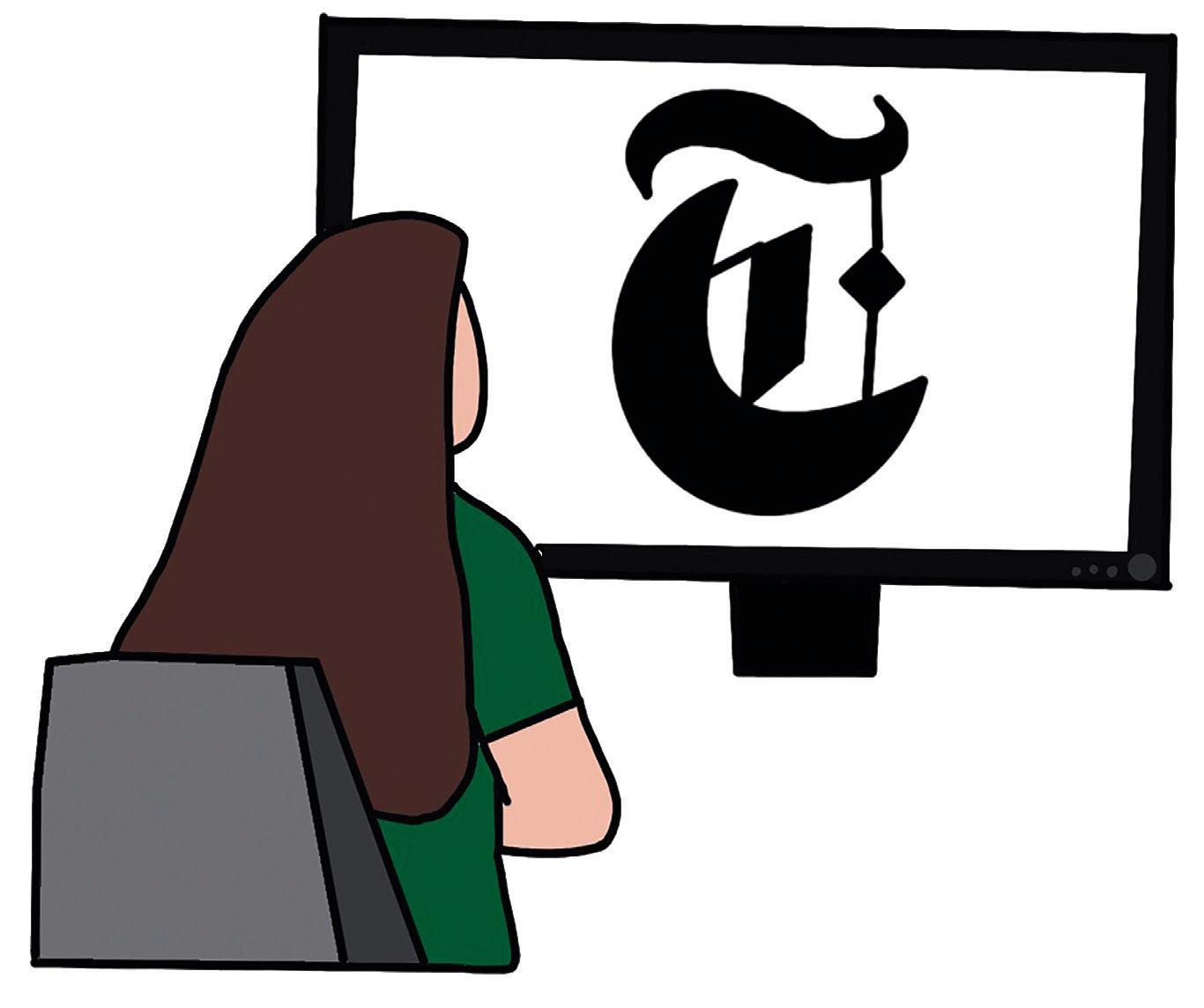
“The only strategy there is for Wordle is to use the same starting word and know what your second option is if the first one doesn’t work out,” Reddy said. When the competitiveness surrounding Wordle grew during its
competition and popularity of Wordle grew, players around the globe made variations of the game to provide new challenges such as solving for eight different words at the same time or words in different languages.
“Wordle Español”

Although Wordle Español is not an option under the Times’ “Games” section, web developers across the globe have created different websites to include their language in the popular game. At Hockaday, multiple language teachers have utilized this spin-off during class.
“I started doing [the English version] in my advisory and then I got a little curious and wondered if there was a Wordle in Spanish,” Spanish teacher Samantha Krasne said. “That’s when I found Wordle Español.”

Since then, the game has received global attention with roughly 2 million daily Wordle players according to the New York Times. Each day, players have six chances to correctly guess a fiveletter word in the English dictionary. When a player enters their first guess, the letters will either appear gray, yellow or
early stages under Wardle’s ownership, dedicated fans posted their answers by making their own wordle text box with gray, yellow and green emojis on their phones. Therefore, a player could brag about their success or have others empathize with their failure without revealing the words they chose.
However, after the Times bought
Krasne loves to incorporate Wordle Español in the preliminary activity for her students. She said that it’s a great activity that sets the rhythm of the class and involves friendly competition. After trying it out in her classes, Krasne has received a good response from a lot of her students.
“It’s a good activity to get the blood flowing and get the students excited about vocabulary,” Krasne said.
While Krasne typically chooses a preliminary group activity to start her classes, she has seen a repeated interest in Wordle Español from her students.
“I thought maybe my students would get a little bored after doing it once because it’s too repetitive, but every time they play, they get so into it and excited,” Krasne said.
Connections
After the Times witnessed the influx of users that Wordle brought to their newspaper, Times Puzzle Editor Wyna Liu was assigned the job of creating
Connections: a category matching game. Liu decided the game would have 16 cards meant to be organized into four sections based on their niche categories. For example, Liu included the words “ball,” “base,” “bat” and “glove” on Jan. 26 to be under the category of “baseball equipment.” However, not all categories are this easy to predict. Out of the four categories, each is assigned a color to determine the difficulty of uncovering that category. So, “baseball equipment” was the yellow category, meaning it was the easiest to find. After yellow comes green, blue and then purple, the hardest category. On Jan. 26, this category was a fill in the blank: “____ bunny.” The four answers were “bad,” “bugs,” “dust”
Since the categories change every day, most players believe there is no strategy in Connections, there is only luck. However, junior Mae Flanagan believes that, after playing for a while with her advisory, she has learned some techniques to help her succeed.
“Now, I can usually see one or two categories just by looking through the words,” Flanagan said. “Then, after guessing the easier categories, I usually try to think of fill-in-the-blank words just because that is a popular purple category.”
While she believes word games very rarely can make someone “smarter,” Flanagan thinks that Connections has helped other aspects of her learning.
“It requires more critical thinking than I would say Wordle or the Mini Crossword does,” Flanagan said. “There’s no starting word or hint to help you out.”
Connections has millions of daily players who enjoy learning the odd trivia facts included in the Crossword combined with the competitiveness of Wordle, as both games have limited attempts. While the debate over whether word games improve brain function remains unsettled, no one can argue that the thrill of getting those five green letters in Wordle or guessing the right category on your last guess in Connections isn’t worth 10 minutes of your day.

Upper School students are bringing life to the story of Tudor England’s Henry VIII’s six wives in “SIX: Teen Edition,” for the annual winter musical.
On Feb. 11, 12 and 14, new Director of Theatre Jeremy Hays will debut his first show with Hockaday.
“SIX: Teen Edition,” though shorter than past musicals the Fine Arts Department has presented, has been just as tall of an order for the cast and crew, featuring around 10 full musical numbers with scenes in between.
“SIX in particular has its own challenges because it’s not a traditional book musical,” Hays said.
“ It’s bringing history into the modern age in the form of a pop concert. It’s basically like trying to put on a mini Eras Tour in Dallas.”
Unlike the Broadway production, the teen version of “SIX ” features an ensemble that helps bring the story to life. Each of the six wives has their own unique story to tell through script and song, and the ensemble is there to back them up with singing and dancing. The wives also have understudies within the ensemble to step in during rehearsals or in case an emergency happens on show night.
Junior Emily Yu serves as one of the two dance captains for the show. In her position, she leads the cast in learning new dances and choreographs parts to help dance teachers Christie Sullivan and Alex Farrior.
“I’m kind of the liaison between Ms. Sullivan and Mr. Hays, bringing together his vision with the choreography,” Yu said.
Because all of the characters have different personalities, senior Erin Antes said every scene is dynamic and fun to perform. Antes plays Catherine Parr, Henry’s sixth wife.
“SIX: Teen Edition” brings unique, historical twist to annual musical

After school, rehearsal begins with signing in and greeting fellow cast members. Then, the cast does a warm-up to boost energy before focusing on one or two songs and scenes for the day. Antes said some days are more vocal-heavy, while others are focused on dialogue or choreography.
“At the beginning of the process, we would practice our runway walks or have a dance-off in order to get our confidence up and get into character,” Antes said. “I love how we’re able to be super hyped and energetic on stage.”
The show is also features an allfemale cast, a change from past years collaborations with St. Mark’s. Antes said even though she’s sad not to have the boys there, it’s easier for everyone to express themselves freely.
The six wives stay on stage for the entirety of the performance, meaning that Antes and the other queens have to constantly stay in character.
For Antes, the time commitment can be a lot at times, but she said all of those challenges ultimately make participating in the musical an even more special and valuable experience.
“The cast is just such an amazing group of people,” Antes said. “I’m looking forward to having a great time with the audience and showcasing all of the hard work we’ve put into the process.”
Antes said she appreciates how devoted Hays is to his direction, showing the cast the energy they should be putting into each line and instilling confidence along the way.
“He’s been really supportive, and I love how he’s always coming up with new and creative ideas for his vision of the
show,” Antes said.
Although Hays has only been with Hockaday for a few months, he said he is already impressed with how the cast has brought “SIX ” to life.
“ I love how we’re able to be super hyped and energetic onstage”
“Musicals are a tall order for such a successful student body and active faculty, but that’s kind of the amazing thing about theater,” Hays said. “No matter what, it always comes together.”
Erin Antes ‘24
Plays Catherine Parr
Even though the audience only sees the final product, there’s so much work behind the scenes that goes into putting on a musical like “SIX.”
Senior Alex Cox is head of technical theater crew, organizing everyone’s tasks and making sure everything goes smoothly during the production process.
“I start each day after school by updating the crew on what needs to get done that day, whether that be finishing something from the day before, starting something new or painting a build,” Cox said.
While there is a general design crew and build crew, Cox said there is not a strict divide. The build crew tends to focus on the actual construction of set pieces, while the design crew will normally finish up the builds.
With a shorter production period, which started in December, the crew does not have as many big scene pieces for the show. They have
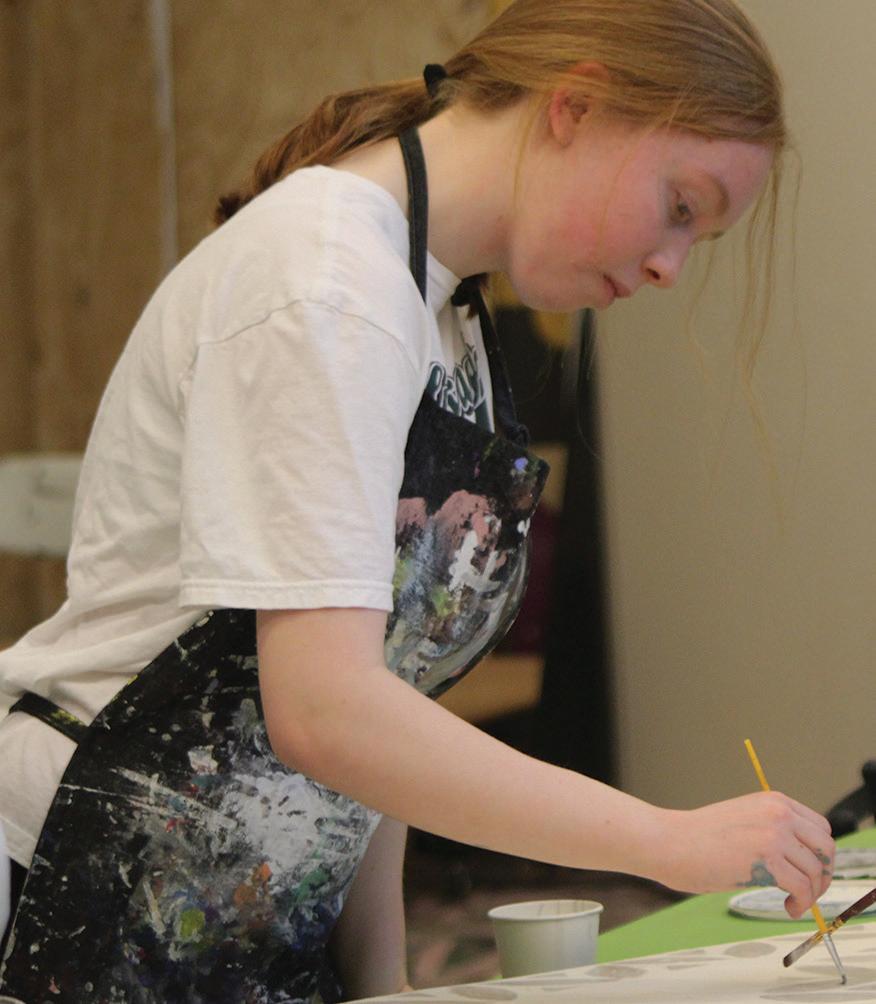
spent a lot of time building the main platforms for the stage as well as other hanging decorations. Cox is also the Upper School student

lighting technician, meaning that she designs and runs lights with the professional designer during the show. She said “SIX” in particular has very heavy lights, which has meant adjusting
the crew for performance days. Cox said tech crew definitely comes with a learning curve. Students must learn how to use power tools and build pieces that are structurally sound while not using too much wood. Another challenge with the builds is learning what looks good on stage and what doesn’t.
“While some paint colors might look good when they’re right in front of you, they could end up looking completely different under stage lights or from further away,” Cox said.
Cox, who was Build Head her sophomore and junior year, said her favorite parts of tech crew are the builds and lights. She loves being able to create certain emotions through different lighting colors.
“The set can look great, and the actors can look great, but when you put them all together with the lights, you really have a production,” Cox said.
Tell me a about your background.
I grew up in Oklahoma and went to an independent school. I discovered the arts in school. Before that, I was a baseball player, and the arts kind of stole me away. I stutter, so my theater teacher in high school was amazing, helping me with my speech and giving me confidence.
Because of that, I made theater my profession. I went to Oklahoma City University, majored in music and moved to New York after that. I have been an actor for 20 years. I did a couple of Broadway shows, and I’ve done TV and film work. Despite the fact that I stutter, I speak for a living. What drew you to Hockaday?
My family relocated to Dallas during the pandemic. I have always taught – I was the acting coach for my agency in New York, and, when we first moved here, I taught at SMU and TCU.
At Hockaday, I saw a place to build the theater program into a home. I want to give the same experience I had that changed my life to other students. I understand the power of the arts and what they can do for us no matter what profession we go into. I want to create those environments for students for whatever it is they choose to do.
With Hockaday being an ISAS school, I was somewhat familiar with how things work. Really, it’s just the talent and intelligence of the faculty

and students. It’s not like any other school. It was kind of a perfect fit.
What has been your favorite part of teaching at Hockaday?
The malleability of the students. The arts (theater in particular) require you to be flexible and open to new ideas. Hockaday has a culture of experimentation, which is necessary in acting. I’ve loved seeing the impact of that openness and willingness to experiment.
Whether you are an athlete, a mathematician, whatever, that willingness to create is universal to anything, not just the arts. Watching that unfold is amazing.
What has been the biggest challenge in putting on the musical?
Putting on a musical is difficult no matter what. They require music and a music director, dance and a choreographer, storytelling and a director. The cast must have a good grasp of all of those concepts as well. There’s a lot of cross-department collaboration, and everyone runs their own components, so we don’t always have the luxury of time.
Our process has been fast and furious. Everyone has been working so hard. I’ve been blown away by the work ethic and talent of the cast and their eagerness to give everything they have to it – that’s ultimately what always makes a show.
What are you most forward to with the show?
I am looking forward to sitting in the audience and watching the Hockaday community take the show in. I think they’re gonna be blown away. Everyone knows that we have talented students, but maybe they don’t know just how amazing they are.
This show is definitely gonna showcase the incredible talent we have and I hope it’s going to knock everyone’s socks off.
What’s your favorite part?
I love how we open the show. It really smacks you in the face.
There’s also a really great part near the end of the show where Erin Antes sings a solo as everything comes to a head. It’s the penultimate moment of the show, and it’s just classic storytelling with music – one actor, a song, and a message. That’s really impactful. What makes SIX so special?
Content, for sure. It is a pop concert with a storyline, not a musical with pop music. Also, there’s no boys. It’s an all-female show, and what better place to showcase that than at an all girls school? That’s what is going to make it so special.
Historically, in musical theater specifically, we haven’t always done a good job of writing
female characters. There’s usually a female character who’s in love, and the purpose of her being in the story is to pursue that love. You could say the same thing for a lot of male characters, but we tend to write female characters in the same way that we do children’s stories – the entire existence of them is a man.
This musical acknowledges that while saying: “We may be related because of the male character, but we have our own stories.”
That’s what the show is about. To showcase this musical in that light is what’s great and different about the show. If you think you’ve seen a musical at Hockaday before, you haven’t seen this.
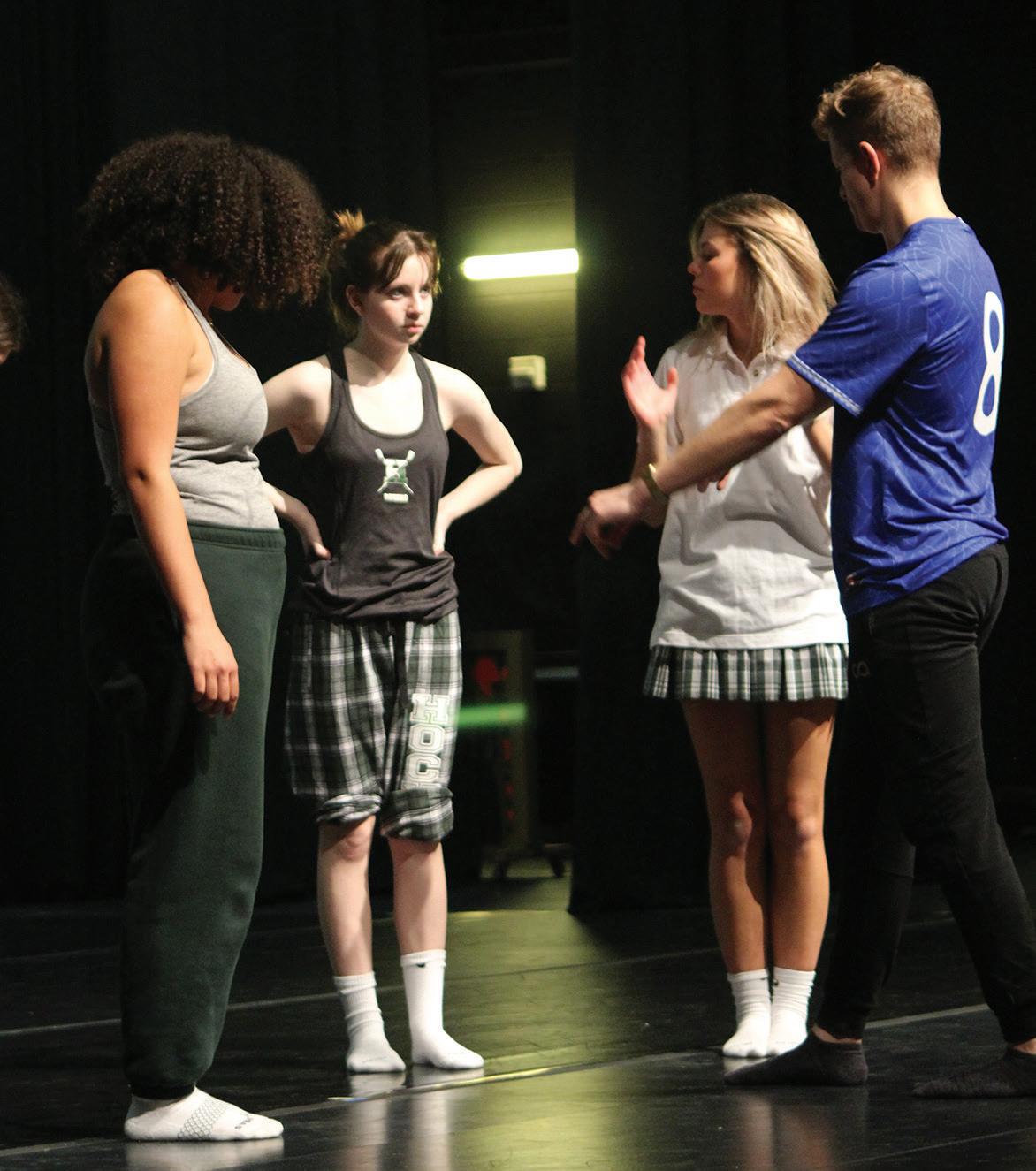
Arts & Life Editor Alexandra Dassopoulos is a self-proclaimed fashionista, ready to report the latest news of the fashion world.
While Hockadaisies follow uniform guidelines at school, they express themselves through their style beyond Welch Road.
Senior Sophia Afzalipour’s interest in fashion stemmed from her older sister’s inspiring wardrobe development – now, she values styling her own unique looks and has a true passion for clothing.
“Wearing the same thing to school every day forces me to take advantage of any opportunity I have to curate an outfit with pieces I connect with,” Afzalipour said.
Alongside Afzalipour’s own fashion development, she’s cultivated a distinct view on what the fashion industry looks like today: in particular, she believes the heavy presence and influence of fashion on social media has resulted in a lack of individual style.
“I think TikTok has changed the meaning of what a fashion trend is and taken it to a whole other level,” Afzalipour said. “People have lost their individuality by immediately purchasing something that is trending in the media.”
Afzalipour highlights the
undeniably quick turnover of recent trends on social media: the “coquette” aesthetic, with its short reign of feminine clothing and bows this past winter, already seems as though it’s going out of style.
“Following these trends on TikTok feeds further into consumerism and touches on the unsustainable aspects of the fashion industry,” Afzalipour said. “I hope our society can move towards developing a relationship with their “fashion style” by finding what they like, not what the media tells them, and valuing their pieces more.”
Sophomore Evelyn Yau, who is an influencer for the brand Edikted, shares outfit ideas on her TikTok account. Contrary to other influencers, Yau is conscious to make sure that she is not promoting microtrends to her audience and believes that her content doesn’t completely shape her watchers’ fashion choices.
“I don’t feel like I’m limiting people from having their own individual style, but I feel like the point of posting my videos is to give other people outfit inspiration,” Yau said. “I try to make sure that I’m not projecting microtrends and tend
to stick with the same aesthetic of clothing that I always wear.”
As far as trends, Afzalipour believes the sophisticated, clean style will begin to fade in 2024 - and her predictions are reflected by the rise of the “mobwife aesthetic:”a style popularized this year that emulates the female fashion of “The Sopranos,” characteristically featuring oversize faux-fur coats and sunglasses, dark makeup and chunky jewelry.
“This year I think people are going to get tired of the “clean girl” aesthetic and move towards a messier look,” Afzalipour said. “I think the trends will move towards more “wild” looks by
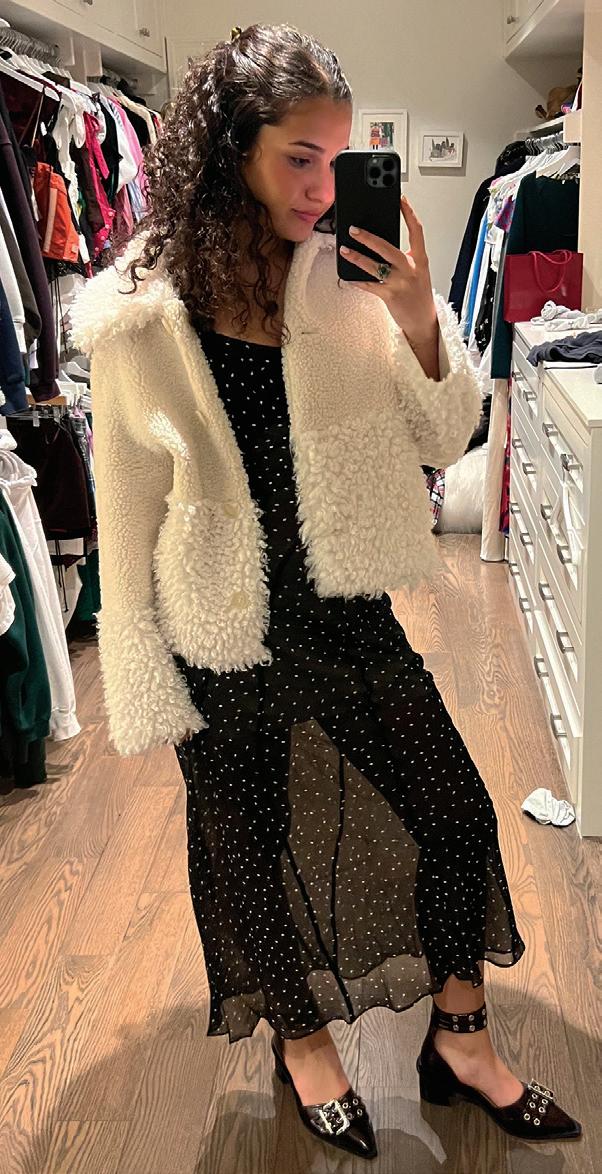

Echoing Afzalipour’s opinions, Yau thinks that leopard print will be on trend – but not for very long. She predicts that international looks will come to the forefront of fashion – specifically the vibrant Australian and minimalist Copenhagen aesthetics, which are contrastingly simple as compared to the “mobwife” look.
No matter what fashion might flood our feeds or fill magazine pages, Afzalipour hopes that 2024 will be the year we harness our unique fashion identities.
“I think it’s time for people withinin the fashion community to embrace their personalities and step outside of the “trending “ box,”
said.
Season one of “Percy Jackson and the Olympians,” which wrapped on Disney+ at the end of January, featured a cast of talented actors and a production quality that attracted an audience of all demographics. The eight-episode miniseries follows the events of the first “Percy Jackson” book by Rick Riordan, “Percy Jackson and the Lightning Thief.”
The show’s actors, who are all teenagers, are the show’s biggest highlight. Walker Scobell, who portrays the titular Percy, brings a new level of depth to the lovable childhood character. As the show has a much darker thematic motif than the book, Scobell conveys Percy’s humorous, sarcastic nature while also sharing his more emotional side.
Other notable young actors were Leah Sava Jeffries and Aryan Simhadri, who rounded out the main trio the series followed.
Although there was some controversy surrounding the casting of Jeffries and Simhadri, who didn’t physically resemble their book counterparts—Annabeth Chase and Grover Underwood, respectively— there is no explanation needed for why Riordan chose the two to portray such important characters in the series. Jeffries’ reserved and serious but caring portrayal of Annabeth perfectly balanced out Simhadri’s hilarious and clever Grover. Both were excellent actors when paired
with Scobell.
Given creative license while scripting the show, Riordan expanded the “Percy Jackson” universe and introduced characters’ stories earlier than the books did. This allowed for a lot of powerful changes in the storylines.
For example, in “The Lightning Thief,” Percy, Annabeth and Grover are on a quest to retrieve Zeus’ lightning bolt before the summer solstice to prevent war between Zeus and Poseidon. Riordan chooses to make them miss this deadline in the show, causing war to break out between Zeus and Percy’s father, Poseidon.

Editor In Chief Harper Harris is a pop culture fanatic, and she’s here to address what’s trending.
With the new year comes new responsibilities, opportunities and — of course — resolutions. If you have been on Instagram or TikTok recently you may have seen your favorite creators making their “ins and outs list” for 2024.
At first, many fans, including myself, were confused by this minute but heavily impactful change. However, in the finale, when Zeus is about to kill Percy for his insolence, Poseidon steps in and willingly surrenders to his brother for the sake of his son. This was a beautiful change from the novel that accurately captures the tumultuous yet strangely lovable and compassionate personalities of the gods.
Despite all of these effective and entertaining changes, the pacing and dialogue of the series were two major low points. For most of the series, the trio seem to know, and even express, which ancient monster they were facing before they faced it, such as in
the Lotus Casino or in Medusa’s lair. This does not happen in the books as Percy is not supposed to know much about Greek mythology. Overall, their seemingly omniscient knowledge contributes to the idea of “telling” instead of “showing” throughout the series. This makes the dialogue feel choppy and separated while also taking away from the humor and thrill of the plot. The show would benefit from letting the actors act instead of making them say everything out loud, and the audience would be able to experience the emotions of the characters alongside them.
I hope the show continues to retell “The Sea of Monsters” next, with more “showing” and less “telling.” The actors have proven themselves talented enough to portray exact feelings and scenes described in the book, and the scriptwriters and directors should give them more liberty to act, bringing a more meaningful story to viewers.
When I saw that one of my favorite movies, “Mean Girls,” was getting a 2024 remake, I was so excited to see the classic revived. I was also eager to see one of my favorite singers, Renée Rapp, as Regina George in the film. Even though I am not a huge musical fan, I still wanted to see the movie.
In 2017, years after the immense popularity of the 2004 “Mean Girls” film, the story was written as a musical for Broadway – so the songs in the 2024 version are not new. I was not familiar with any of the songs going

into the movie, but I thought they were a fun addition.
The movie follows Cady Heron, who was home-schooled in Africa, and her transition to a public high school in Chicago. Cady befriends “The Plastics,” the popular group of girls at school, who constantly cause drama within and outside of the friend group.
The original movie was written by Tina Fey, who also played Ms. Norbury, Cady’s math teacher, and she came back to rewrite the screenplay, serve as a producer and reprise her role.
Since Fey was involved in the process, I assumed the main story in the film would stay the same. While the main plot of the movie did not change very much, some iconic scenes and lines were either altered or cut out completely.
Also, the amount of advertisement placement felt awkward and embarrassing. It makes the movie feel like a huge commercial and distracts from the various scenes. For example, in one part of the movie, Cady is putting on lip gloss from e.l.f. When someone asks what the shade is, she says the product’s full name. It was just uncomfortable to watch and obviously out of place. In addition, Regina George, the “Queen Bee” whose personality is centered on being rich and better than others,
starsis seen holding and wearing e.l.f. products. While e.l.f. is a great makeup brand, it is a cheaper drugstore one that the 2004 Regina would not be caught dead wearing or endorsing.
Shopify, Motorola and SeatGeek were other brands that heavily influenced the movie and made the viewing experience feel odd.
Although I felt uncomfortable watching a majority of the film, I did enjoy the performance of the song “Sexy,” which takes place during the Halloween party scene. The song’s unique dance accompaniment made it my favorite scene in the movie. Other songs, especially the ones sung by Cady, were far from passionate and hard to watch. Some of the musical numbers are odd, including the uncomfortable “Apex Predator” scene that featured characters acting like animals - it made me laugh at how strange it was.
Another song, “Stupid with Love,” which Cady sings when she meets her love interest Aaron, was very monotone and missing the passion and fun that “Sexy” brought to the movie.
Overall, it was entertaining to watch, but this movie will never live up to the original. If I am in the mood for “Mean Girls,” I will unapologetically indulge in the 2004 version.
The premise of the lists is simple. Create a list of things that you like and want to adopt in your life or daily schedule and then a list of things you want out of your life for whatever reason. The lists are meant to be personal and creative.
As a Senior nearing the end of my 13-year career at Hockaday, I decided to make my own “ins and outs list”
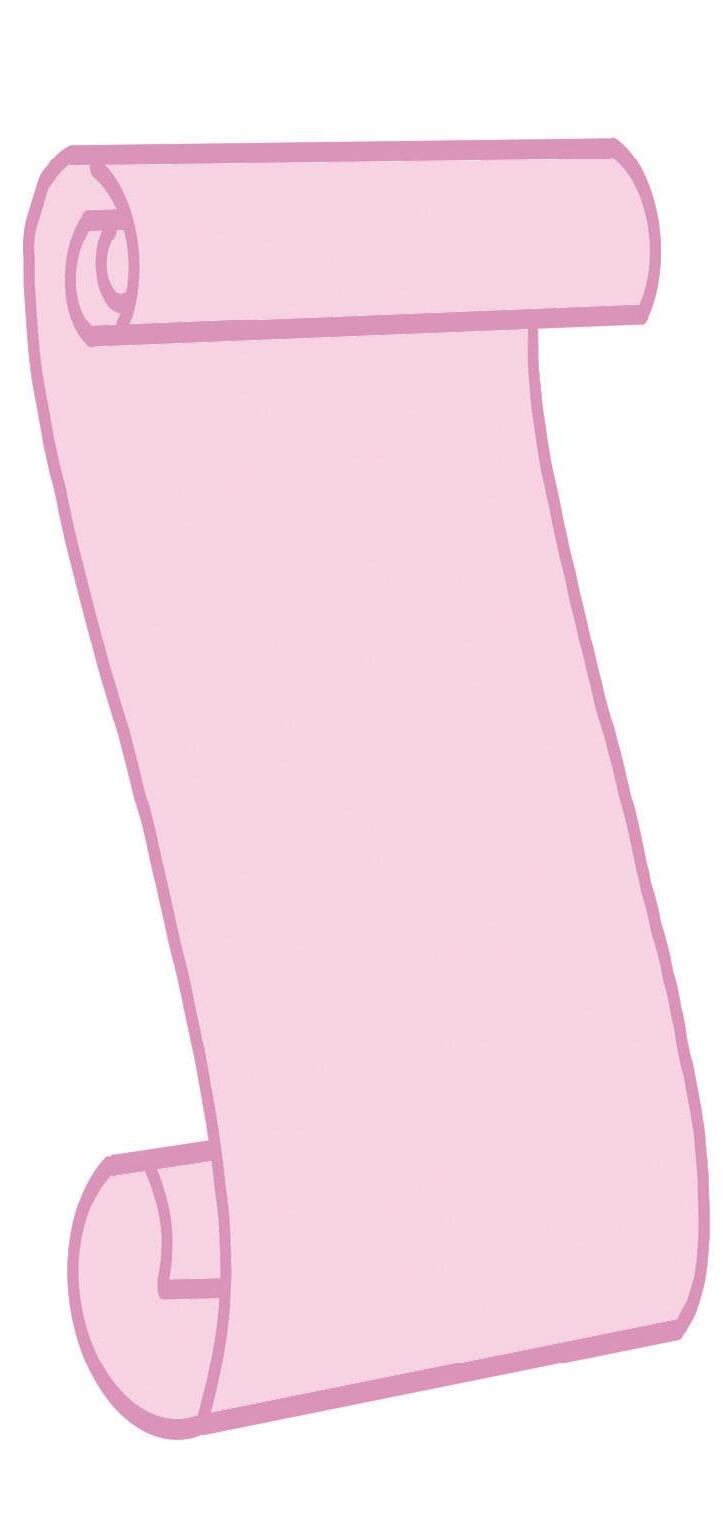
InsWearing pajama shorts under your skirt Turningrightintothe Forest Lane entrance SeniorHangingoutintheCommonsduring Lunch and WIN SaddleOxfords Stayinginyourcarfor aslongaspossiblebefore walkingtofirstperiod ArtsSupportingtheFine atHockaday
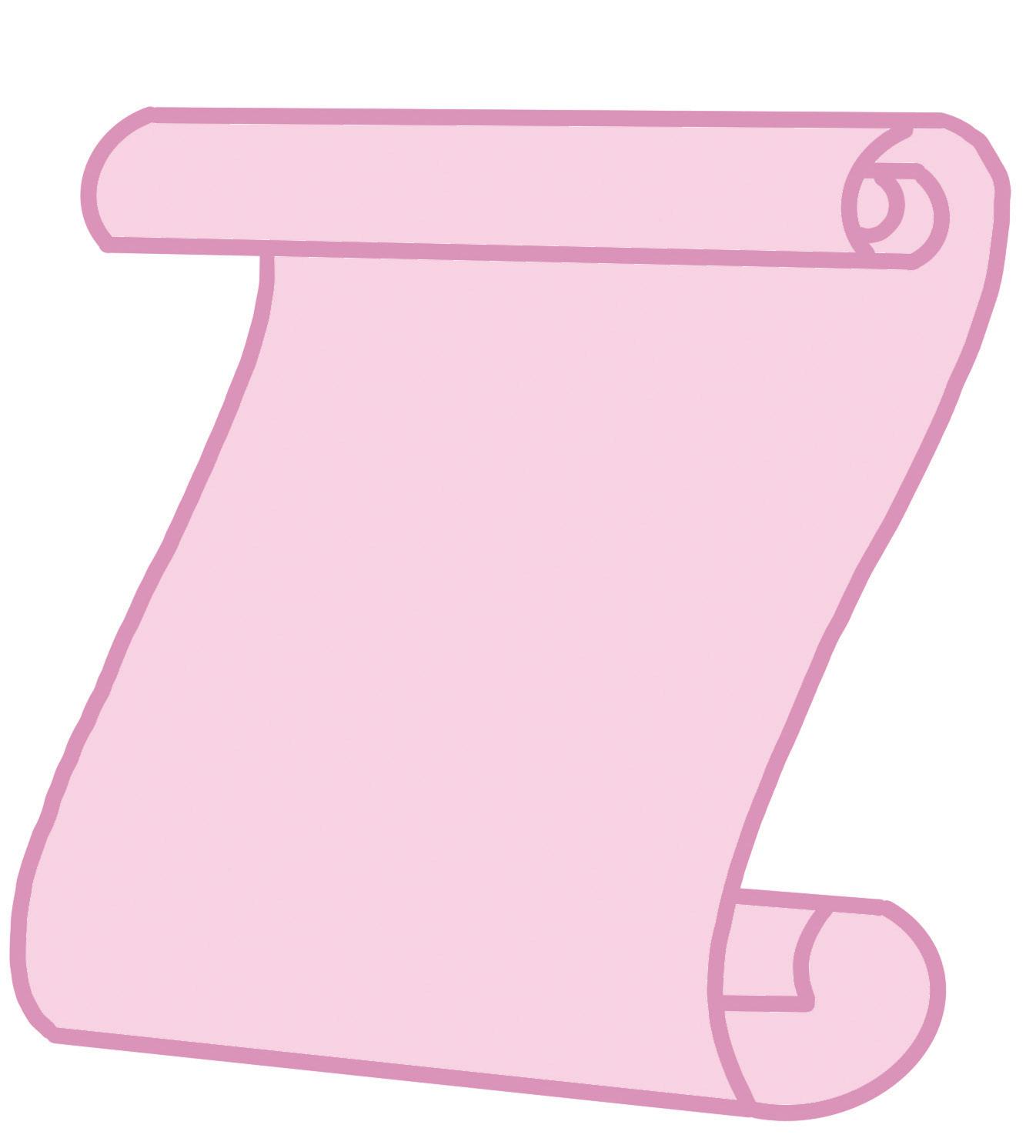
Sitting outside during the Winter
Not supporting our student HockadayDisrespectingathletestheupperclassmen
The line to turn left intoBuzzingcarpoolinto school when your badge doesn’t work
Leaving your computer charger at home . . .

As second semester commences, most Daisies will be staying up late or even pulling all-nighters to achieve our academic comebacks. I’ve compiled a list of four of the best places to grab a late-night bite to refuel our grinds while getting on top of schoolwork and finishing the school year strong.

Located at 3020 Mockingbird Lane, the iconic Dallas staple Shug’s Bagels has recently introduced “Shug’s Bagels – After Hours.” From 6 p.m. to 2 a.m. Tuesday through Saturday, you can get any regular bagels and sides on the breakfast menu plus the new “After Hour Specials.” Some of these specials are fried pickles, mozzarella sticks, mac & cheese bites, truffle fries and onion rings, so there’s really no wrong way to go. Whether you’re looking for one of their classic breakfast bagels or an “After Hour Special,” Shug’s is the place to go to get some of the best late-night bites in Dallas.

If you’re looking for a sweet treat, Insomnia Cookies is the way to go. Insomnia Cookies is open from 11 a.m. to 3 a.m. Thursdays through Saturdays and 11 a.m. to 1 a.m. Sundays through Wednesdays and their cookies are made to be delivered right to your doorstep. Insomnia Cookies takes the classic chocolate chip cookie to a whole new level with over 15 different cookie flavors, cookie sandwiches with icing in the middle, cookie sundaes made with their own ice creams, tons of toppings and different brownies to choose from.
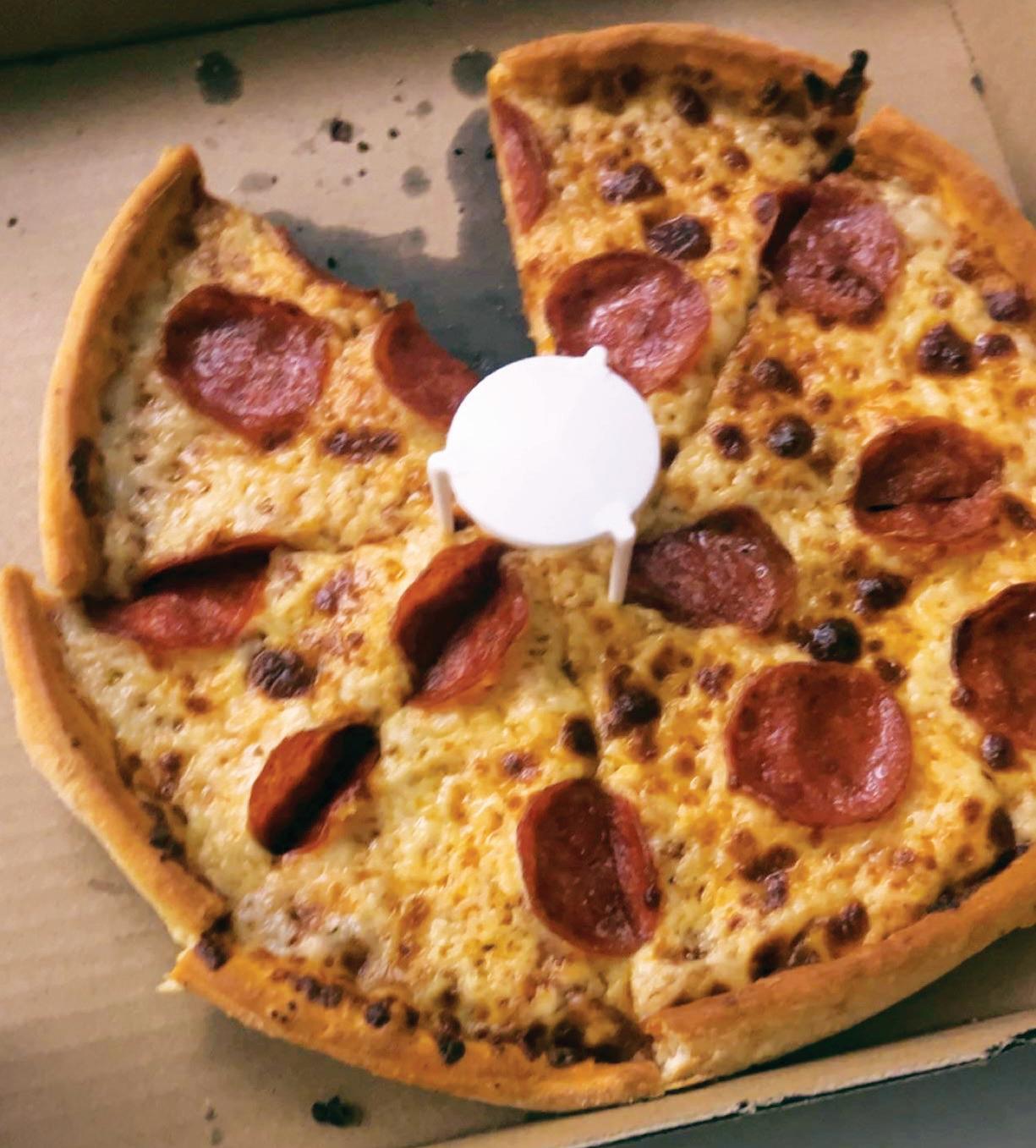
With over 10 locations around DFW, Zalat Pizza is modeled after the famous New York Style pizza and is currently ranked as one of the best takeout pizzas in Dallas. Open 11 a.m. to 4 a.m. on Fridays and Saturdays and 11 a.m. to midnight every other day of the week, Zalat delivers the perfect pizza for Hockadaises eating over their computers, finishing their English essays and booking the next available Writing Center appointment. From the classic pepperoni and cheese to an elote pizza, Zalat has something for everyone.

Velvet Taco, a classic Tex-Mex staple, has over 10 locations around Dallas, a vibrant atmosphere and a diverse menu. It’s open from 11 a.m. to 4 a.m. Fridays and Saturdays, 11 a.m. to 1 a.m. on Thursdays and 11 a.m. to midnight Sundays through Wednesdays. The restaurant offers multiple meat, vegan and breakfast tacos with chips, queso and loaded tater tops as sides. They bake a delicious red velvet cake as dessert with cream cheese frosting and cajeta drizzle on top. Not only is ordering online easy and efficient here, but it also provides an electric atmosphere that invites crowds of customers until close.

As teens, we often find ourselves surrounded by social media as we spend every waking moment engulfed in its false image of perfection. This perfection can be an escape from our ugly reality, but at what cost?
Form III students Sofia de la Pena and Vanessa Ma reflect on the beauty standards social media portrays and how the standard affects their lives.
Both Pena and Ma got social media platforms like TikTok, Instagram and Snapchat around fifth grade. Pena admits she got Snapchat to fit in, as it was the main form of communication among her peers and felt excluded without it.
Ma, on the other hand, got TikTok to simply watch videos, however she began making her own videos soon thereafter.
Pena believes being skinny and having injection-filled-lips, button noses and blonde hair are features that social media highlights the most. With curly brown hair, Pena believes she doesn’t fit the standard of beauty society has set.
“Most feel like hair doesn’t matter much, but I feel like blonde is what many people want to be,” Pena said.
Social media has made Pena disappointed, especially as she sees the comments on viral videos on TikTok of conventionally attractive girls. She sees comments such as: I would kill to look like this and why can’t I look like this. These comments cause her to wonder: “Why are we all trying to be this one person?”
In addition to social media, Pena
St. Mark’s senior Noah Cathey and junior Neil Yepuri share their views on women’s beauty standards and similar standards that they face as men.
Cathey is a firm believer that standards of beauty manifest in how a person looks.
Disclaimer:
also notes the importance of people at parties who often try to fit a certain standard of beauty.
“I have definitely felt insecure at party settings,” Pena said. “Especially when people don’t talk to me, and I start to think it’s because I’m not pretty enough and I don’t look a certain way.”
At parties, Pena is sometimes the only person with curly hair, especially because many people choose to straighten their hair, causing her to feel out of place and awkward.
“Not everyone has to find you pretty and that’s ok,” Pena said. If you just try to make sure that everyone likes the way you look and the way you style yourself, you’re never going to be happy and feel fulfilled.”
Similarly to Pena’s views on blonde hair, Ma believes bright blue eyes are also a standard that social media sites such as TikTok project. This standard has influenced Ma to wear blue colored contacts.
In addition to American beauty standards, Ma also is chained to expectations from Chinese beauty standards.
“In China, people think girls are only the prettiest when they have a very small face and I wasn’t born with a small bone structure in my face,” Ma said.
“The ideal body shape for men has changed less than that of women.”
“In more simple language, the things that girls find attractive manifest themselves in physical characteristics.”

Cathey believes that girls pursue certain traits, and because attractive traits can be tied to physical attributes, they might go after guys that look a certain way.
“What girls look for in a guy is more related to how he takes care of himself and the personal qualities he has,” Yepuri said.
Cathey agrees with Yepuri’s belief.

Because Ma believes she doesn’t fit a certain standard, she began using face altering apps to reshape her face. This has caused Ma to feel like she can’t be herself, as she feels the need to edit her waist and legs when taking full body pictures.
“I only feel prettiest if I don’t look like myself,” Ma said.
Both Pena and Ma offer advice to their younger selves and others:
“When you’re trying to post a picture or your friends are trying to post a picture, your vision lands on yourself first. You’re like ‘Oh my gosh don’t post that picture I’m so ugly,’ but sometimes it’s just you who thinks you look bad,” Ma said.
“I only feel prettiest if I don’t look like myself.”
Vanessa Ma

“The standards for men are often more attainable as they are usually things that they can easily change or do for themselves,” Cathey said. “For example, if girls find athleticism attractive, they might tend to go for more tall and agile guys.”
Cathey attended co-ed schools before enrolling at St. Mark’s for ninth grade.
years, agrees.
Cathey and Yepuri both said they wished girls knew that men’s preferences
 Larkin Clouston, Staff Writer, and Elle Myers, Photos and Graphics Editor
Larkin Clouston, Staff Writer, and Elle Myers, Photos and Graphics Editor
Ashley Ferguson, Upper School Counselor, helps students and advocates for them socially and academically.
Ferguson’s work experience has included domestic violence, juvenile probation services, medical social work and trauma counseling.
In the domestic violence field, Ferguson has worked with many students and realized many school counselors were not necessarily informed on how to support students who are struggling.
“I got into school counseling because I wanted to change the stigma and support and provide education on counseling” Ferguson said.
A current Daisy talks about her desire for plastic surgery and how modern-day beauty standards affect her self-image.
Q: What plastic surgery would you like to have if the cost is not in the equation?
A : If money was not in the equation, I would want lip and face filler, Botox, forehead reduction surgery and a nose job.
Q: How young were you when you realized you wanted these procedures and what made you want it?
A : Since I was younger, I have been bullied for my forehead and nose size, and that is when I realized I wanted these procedures. But I don’t think I would’ve been insecure about those features if nobody had ever pointed them out to me. In middle school, people would make comments like “five head” and “big nostrils”
Ferguson admits that conversations about appearances and self-image are a large part of discussions that she has.
“I would say that it is a part of a lot of conversations in my office, where my door is open or closed,” Ferguson said. “Some conversations might even be what you are wearing to a Taylor Swift or Beyonce concert. A lot of conversations I have, and other people have with their friends, regularly are rooted in self-perception and ‘what I look like versus how other people view me.””
Ferguson said that comments and conversations about people’s appearances are woven into the daily threads of conversation.
However, if a student came to Ferguson seeking plastic surgery, she would advocate for them in and outside of the classroom and ensure that the student feels supported academically and socially.
“I would check in on them to make sure they feel supported by their teachers and make sure they don’t come back too prematurely and that they are taking care of themselves,” Ferguson said.“I can also send emails to teachers saying that students are going to be out, and I do not need to explain the reason because I believe that it is your story, and you should tell it.”
Q: Do your parents believe you should undergo these operations?
A : My parents don’t think I need them, but at the same time, I want them. Also, beauty standards right now make me want these procedures even more.
Q: Has wanting one of these procedures affected your mental health?
A : Yeah, for sure, it affects my self-image and self-confidence. When I put on makeup, I feel a lot better about my appearance momentarily, but at the same time, I also dislike the way I look and pick myself apart for it.
Q: Have you ever spoken to a medical professional about this endeavor?
A : I’ve spoken to my therapist but not a plastic surgeon, but I for sure would. I would be kind of scared to go through the procedure, but it also depends on what I’m getting done and how invasive the surgery is. For example, in forehead
Joseph Leach is American Board-certified in both Otolaryngology and Facial Plastic Surgery. Leach received his M.D. from the University of Texas Med School at Houston and his specialty in Otolaryngology-Head and Neck Surgery at the University of Texas Southwestern Medical
understanding of what looks good and sets the standard of what features a nice-looking face would have. Although there have always been beauty standards, they are now
Among adolescents, what is the most

It would definitely be rhinoplasty. In addition, split earlobes are the second most common cosmetic issue I see in young people. I see problems with ear piercings gone bad or infections and scars that form around the ear from that. As young people, you’re not burdened with things that come later in life like bags, wrinkles, saggy skin on the face so it’s not an issue.
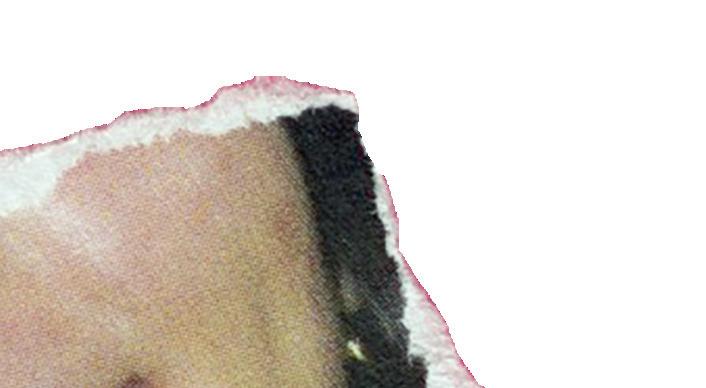
Q: How does having plastic surgery affect someone’s mental health?
A : 95% of people don’t need plastic surgery and the people that don’t need it shouldn’t have it. We do see situations where someone looks totally fine and yet they have an abnormal fixation about a certain body part. There are situations where there is a relatively significant malformation and it’s causing social issues like withdrawal, depression or anxiety.
Q: Can you speak about your firsthand experiences with adolescents coming to you
asking for plastic surgery?

Girls tend to be more open about it and they’ll have stronger opinions about what they want to look like than boys. They’ll bring pictures of celebrities and say I like this about her nose, and I want these features. I try to explain the procedure as well as I can so that they won’t be scared, and so they’ll have the best idea of what their recovery will be like. A lot of younger people want their parents to film the removal of the plastic pieces out of their nose and they will share it with their friends on social media, which is odd for me, but it’s entertaining for them.
Q: What do you believe is the youngest age for adolescents to have cosmetic surgery?
A: In my field it’s important for a girl to be at least 14 years old and for boys to be 15. This is because the nose must reach normal adult size before having surgery on it. By cutting into the cartilage of a 10 or 11-year-old, I could damage a growth center, the place where cells are located that are responsible for allowing the nose to get bigger. Damaging the growth center at an early age could cause major deformities or alterations in the growth of the nose.
Q: What are some misconceptions about plastic surgery?
A : One misconception about plastic surgery is that it will solve all of life’s problems. A more realistic goal would be to restore harmony to your face or let a particular feature be in better harmony with the rest of the face. Another misconception is that
cosmetic surgery is something you can have over and over. Truthfully, every time you have cosmetic surgery on any body part it becomes more and more difficult to have it done again. It’s always best to do the right operation the first time and then never have that part of the body operated on if you can avoid it.
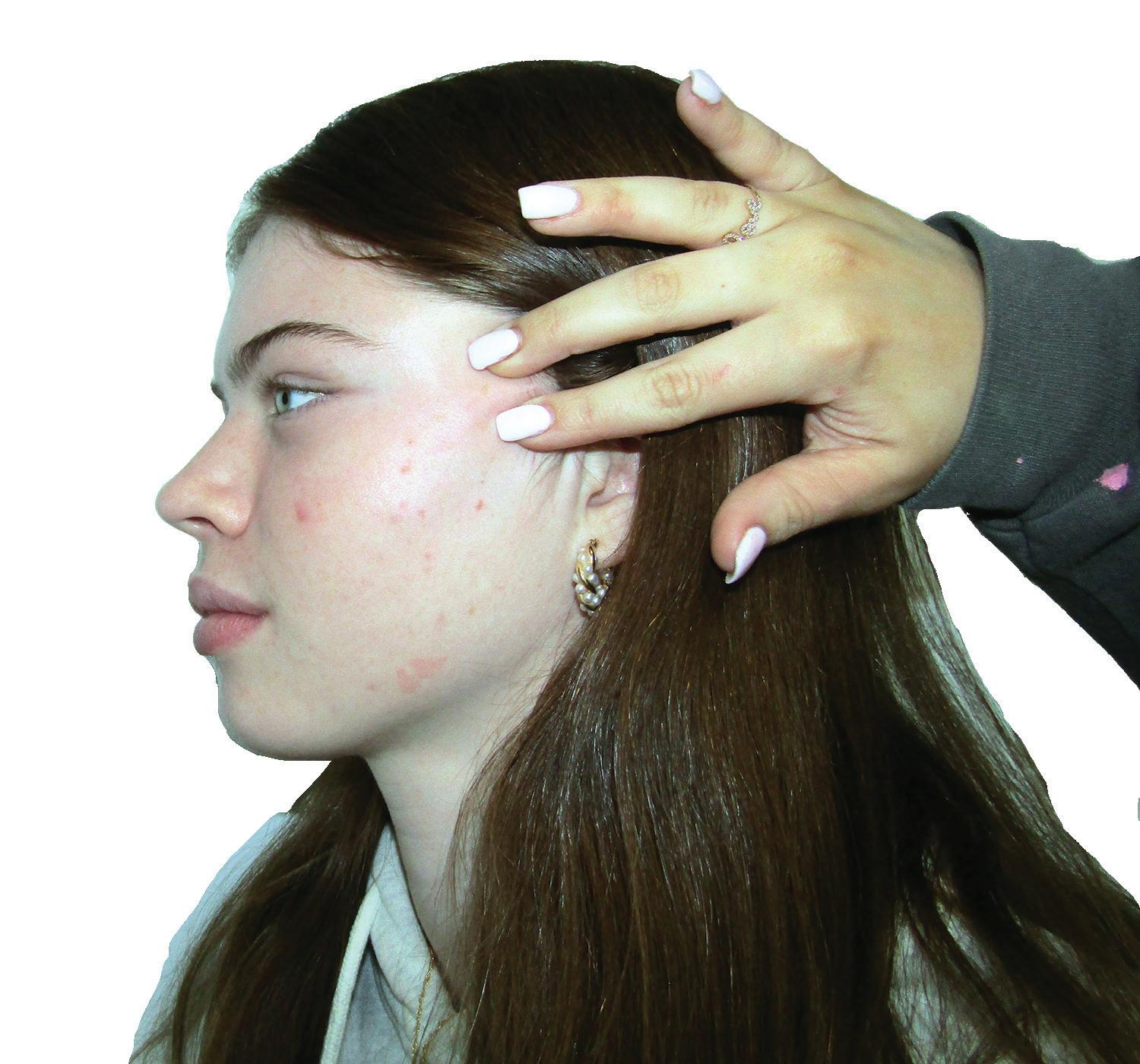
Black History at Hockaday
A closer look at Hockaday’s first Black alumnae and Black student leadership
From dissections to monitoring fish tanks, the juniors and seniors who spent seven days at the Marine Biological Laboratory (MBL) in Woodshole, Massachusetts during retreat week participated in many STEM activities and expanded their knowledge in marine biology field.
To be selected for the MBL trip, juniors and seniors filled out an interest form and then filmed a threeto-four-minute video explaining why they are a good candidate for the trip.
Students began each day by changing and checking the water in their fish tanks.
“The fish tank was the overarching project,” junior Naviya Reddy said. “We did lots of different activities, but we always came back to work on the fish tank.”
Throughout the trip, students monitored their fish tanks and tested various concentrations in the water to create a safe living environment for the sea urchins, sea stars, sea cucumbers, hermit crabs and other specimens.
is toxic to fish. When the students’ water tests indicated levels of ammonia, they diluted it by removing one-quarter of the tank’s water and replacing it with clean water.
Junior Jordan Lacsamana said that the students also learned about the nitrogen cycle, which taught them that ammonia converts to nitrate and later to nitrite with the help of bacteria. Measuring the nitrite and nitrate levels helped them see if the ammonia broke down.
At the end of the trip, they presented the findings in a PowerPoint to show how these levels affected the water in the fish tanks. They tested the different levels in the fish tanks to check the water quality and ensure the fish and organisms had the necessary conditions to thrive.

Reddy’s favorite activity involved squid embryos.
“We had live squid embryos and we put them under a microscope,” Reddy said. “Then, we picked off a film with two forceps to see them better.”
embryo lab onto their own computers and made 3D reconstructions of the embryos using an app called Fiji.
Charron said that the most notable thing she learned was that some aquatic organisms can regenerate entire parts of their bodies.
“I found it very interesting that this information is used for science in humans, too,” she said.
In the afternoons, students listened to participated in labs and listened to lectures that ranged from water safety and water quality to butterflies and coloration.
Typically, the lectures corresponded to lab activities during the day, but they also attended lectures on invertebrates and vertebrates.
The students also had the opportunity to see and hold Thomas Hunt Morgan’s Nobel Prize, which he earned for his work with fruit flies.
Outside of the activities pertaining to marine biology, students also enjoyed exploring the surrounding area. During their free time, they walked to a nearby café, Pie in the Sky, and went on runs along the beach.

Throughout the trip, the students said they grew closer with one another too.
“Being with each other helped us get a lot closer, and now we talk even more than before,” Lacsamana said. As a result of the trip, Charron, Lacsamana and Reddy expanded their interest in the STEM field.
The MBL trip kindled a newfound interest in dissections for Reddy and inspired her to carry her new passion into her future classes at Hockaday.
“We set up fish tanks with proper filtration systems and fed those each day,” junior Aynalie Charron said. “We tested the water for ammonia – which is toxic – as well as nitrate, nitrite and pH levels.”
In addition to these water tests, the MBL students tested the percentage of dissolved oxygen, temperature and salinity, which is the dissolved salt in a body of water. Ammonia, a waste product of the fish,
Lacsamana said the dissections were her favorite labs, and she enjoyed using the MBL’s confocal microscopes to observe squid embryos.
“We had dead squid embryos that we dyed, and we were able to see the muscular system and nervous system because they were dyed different colors,” Lacsamana said. “After staining them, we imaged them and looked at them through the confocal microscope that projected the images on a computer screen.”
The next day, the students uploaded the pictures from the squid
“After the lectures, we went to the lab and would implement everything we learned into an experiment,” Charron said.
Although students mainly worked in labs and lecture halls, they took part in other activities on the MBL’s campus too, notably the rare books tour.
“The rare books tour included collections of different marine species from different centuries which was really cool to look at,” Lacsamana said. “One of the books had detailed drawings of various fish species and their descriptions, but also a drawing of mermaids and other mystical creatures.”
“I talked to Dr. Fishel about how much I loved the dissections,” Reddy said. “She said I should take Comparative Vertebrate Anatomy next year, which I didn’t think about before.”
Charron’s experience on the trip opened her eyes to the expansion of their biology lessons to humans.
“I didn’t realize that there was a way to connect this to humans and benefit both species through biology,” Charron said. “Now I think about this a lot more, and learning about the animals and what they can do made me more interested in biology.”
Of the 365 days to have a birthday, sophomore Riya Sangapu was born on the 366th – Feb. 29, known as Leap Day. On Leap Day, which only occurs every four years, Riya will celebrate her sixteenth birthday. And she’s heard all of the jokes about turning four.
Riya loves having something special to look forward to every four years but agrees that there are some disadvantages to being born on the Feb. 29. Many government documents and websites do not include the option of entering Leap Day as a birthday.
As she prepares to get her driver’s license soon, Riya will pick another date for her birthday sincethe Texas Department of Public Safety does not recognize Feb. 29 as a valid birthday.
“On my driver’s license it’s going to say March 1 instead, which kind of sucks,” Riya said.
Popular social media apps like Snapchat also exclude the date forcing Riya to pick either Feb 28. or March 1.
“It doesn’t let me put Feb. 29 as my birthday,” Riya said. “I hope Snapchat will change this soon or everybody will wish me on the 28th instead of my real birthday.”
Both Riya and her mom agree that there are more pros than cons to being born on such a rare day.
Mrs. Sanju Sangapu said when she first found out her daughter would be born on Feb. 29, she was nervous and hoped her daughter wouldn’t be born on that day. Now, as she remembers that day, her feelings have changed.
“I didn’t want her to miss having a birthday every year,” Mrs. Sangapu said. “Little did I know, she now has a special birthday every year, and an extra special one every four years.”
she is. Some tease her saying she is immature for her age or baby her because of this; however, takes pride in being born on such a memorable day.

Riya also enjoys having such a unique birthday despite hearing countless jokes about how young
“I really like being born on Leap Day because I think it’s such a rare date and I’m always looking forward to it,” Riya said. “I still get to celebrate a birthday every year, so I’m not missing out on that.”
One of Riya’s favorite Leap Day memories was when she went to Disney World with her grandparents and parents for her fourth birthday. There she received a birthday morning wake-up call from Mickey Mouse.
“It was super fun because I got to dress up as Sleeping Beauty and get my hair and makeup done,” Riya said.
Riya chooses to celebrate on Feb. 28 during the years her actual birthday doesn’t occur, but she said her family and friends never fail to make her day any less special than her real birthday.
Looking through a microscope, delineating facts from history and discovering new facts about a lesser-known topic, students are able to explore their interests outside of the classroom. The Student Directed Independent Study Program began 10 years ago to help students delve into research. This program provides an opportunity for further research in several areas and allows students an opportunity for further research in several areas.

Before this program, students were required to work with a faculty sponsor who had to commit time to working with the student and mentoring them in their research. However, over several years, it molded into something students could do themselves and now Dr. Barabara Fishel, Dean of Studies, supervises all the participants.
“Our independent study program was designed to let students explore topics that are of interest to them that we may or may not cover in our classes,” Fishel said. “It gives students the opportunity to explore things that are of interest to them, in their own time frame and in the manner that they think would work best.”
This program is built to work with any interest, whether that be in fine arts, core classes or an outof-school activity.
Junior Khushi Gohel has been doing an Independent Study since the beginning of her school year, working on a voice-to-text Swahili translator. Currently in her skill development phase, her plan is to have a working demo that can convert a teacher speaking in Swahili to written notes in English for beginner Swahili classes in college.
“The way I came up with my topic was funny,” Gohel said. “Me and my family went on this tour to
[UC] Berkley, and we were standing in the lobby, and there was a ping pong table where you won a t-shirt if you beat the teacher sponsor, who was Dr. David Kyeu, the head of African studies at Berkeley.”
Following that game, she talked with Dr. Kyeu about his classes and his experience at UC Berkely. His Swahili class sparked her idea for creating a translator for novice students who could not keep up with a fluent Swahili teacher and would greatly benefit from the creation.
Other students got their ideas straight from their classes. Senior Zariah Arrington works on translating and comparing poems from two famous Latin authors: Ovid and Catullus.
“I was in Latin Literature last year and I was supposed to go to AP Latin, but everyone dropped out and I didn’t want to take it by myself,” Arrington said. “Either I could drop Latin or do an Independent Study, so I sort of did a continuation of Latin literature on my own.”
Asmerom, Margaret Thompson, Aria Bhatki, and Avery Clarke have been planning a joint independent study that determines possible solutions that are gentle on plants and crops while still being effective in protecting them from disease and insects.
“It was originally Caroline’s idea to do an independent study,” Thompson said. “Then we talked with Dr. Fishel and found one that was interesting to all of us.”
All members were set on having a topic that impacted the environment in a positive way as well as including a social impact aspect in the project.

This program not only allows one student to further their interests, but it also allows multiple students to collaborate while learning about their chosen topic.
Seniors Emery Stehel, Caroline Warlick, Hanna
I’ll Keep This Short: The Modern Short Story
The Modern Short Story senior seminar focuses on modern short stories from 1980 to present.
English teacher Ben Gerdts drew on ideas from his past seminar on Contemporary American Literature and chose to focus on his favorite unit – short stories – when introducing the idea for the new class. Every class, students expand their bravery by reading new
AP World History Modern
Studying the history of the world, AP World History Modern is a semester class for sophomores, juniors and seniors. Taught by history department chair Kathryn Hodgkinson, the class analyzes history from all parts of the world through time, preparing students for the AP World History exam. Hodgkinson, who has helped grade the AP exam for many years, provides her insight into the exam and helps
literature and analyzing stories written by authors such as Karen Russell and George Saunders. Students will write their very own creative short story by the end of the semester.
“I love reading short stories because you can learn about a whole new world and group of characters just in one sitting, instead of reading a whole book for an extended period of time,” senior Hayden Marchant said.
students set aside their bias when analyzing sources. Sophomore Morgan Bowers, excited to take the AP version of her favorite class, finds the course really interesting through the numerous discussions and readings the class has had thus far.
“This course is not specifically about Robespierre or even Napoleon,” Hodgkinson said. “It is about how people interact with their environment and with each other.”
The End of the World
“We are looking at the growth of vegetables, fruits and produce,” Thompson said. “Nowadays those plants are very immune to the pesticides that protect them from bugs and diseases. So, our project is trying to find new things that they would react positively to and basically not be immune to.”
This program has been an outlet for many students to develop their passion for a specific area. Many, if not all, students have been able to use the skills learned in their independent studies in out-of-school opportunities and higher education.
“Doing this project was a good opportunity for me to branch out more than what I normally do.” Thompson said.
What is humankind’s fate? Senior semester course The End of the World connects ideas from physics, chemistry and biology to help uncover this question.
Taught by physics teacher Dr. Marshall Bartlett, the class studies how humans are maturing through time and how our decisions will impact our fate. Through group discussions, the class covers different conspiracy theories about the end of time and the scientific likelihood of each idea with additional information
Astronomy, taught by physics teacher Dr. Steve Balog, explores the aspects of space. The class will take trips to the planetarium and learn deeply about the stars, planets, galaxies and more. Balog, an astronomy enthusiast from a young age, tailors the course to study specific topics of interest to the students each
provided so that students can learn more about topics that interest them. Bartlett is excited to teach this class again and hopes his students develop the ability to make difficult decisions with limited information.
“I decided to take End of the World because the conspiracy theory videos I watched in Middle School and the more serious philosophical discussions I’ve had recently have fascinated me with the topic,” Senior Harper Tagg said.
year. With the upcoming eclipse in April, this semester will focus particularly on what is taking place and train students to be guides for others around campus.
“I decided to take astronomy because it’s something that has always interested me, and I hadn’t yet had the opportunity to deeply learn about,” Senior Madelyn Neuhoff said.
Sophomore Jada Muhia buzzes in anticipation, while sitting at the edge of her seat, hanging on every word the Director General (DG) says. As the DG begins to wrap up, Muhia leans forward, eagerly awaiting what she’s about to say next. “The 71st session of Harvard MUN is officially in session.”
The room erupts into cheers as delegates around Muhia scramble to collect their belongings and be the first to committee, where they will spend the next several days brainstorming solutions to data privacy and digital transformation in the European Union.
MUN, or Model United Nations, is a simulation of the United Nations General Assembly and other sub committees in which students learn diplomacy and international relations. At a Model UN conference, each student acts as a representative of a country, organization, or person, and must solve a global issue with other delegates, who represent their own respective countries.
Hockaday’s Model UN club has grown exponentially in the past few years, and now has around 75 members.
“When I joined Model UN freshman year nobody really knew what it was and there were only 20 or so members” Model UN Club President and senior Anisha Sharma said. “During my freshman year we would only win two or so awards per conference, but once I became president, I wanted to focus on growing the club.”
With new leadership, club growth and membership has increased. The club attends more conferences and has begun winning more awards.
“I taught students how to do MUN, and hosted mock conferences once or twice a year,” Sharma said. “Now we win eight-10 awards per conference and have around 50 new members per year.”
Conferences are a big part of Model UN. Usually held over a two-to-three-day period, these conferences give students the chance to enhance their diplomacy skills and put what they’ve learned into practice.
by Bennett Trubey | Editor-in-ChiefWould a middle schooler understand the similarities between the anatomies of a dogfish shark, a caterpillar and a human? Maybe not, but senior Anisha Puri wants to change that.
Missing the excitement of her junior-year Comparative Vertebrate Anatomy semester, Puri set out to make anatomy accessible for younger students and those in underserved communities by creating a coloring-book.
“I wanted kids to experience the wonder that I felt when learning about anatomy,” she said. “It took me until junior year to do that, so I thought kids should learn it before then.”
“It’s a standard that the club participates in four conferences each year: two local conferences, an away conference in Texas in the fall, and a larger national conference in January,” Emily Mosley, the club advisor, said. “Most of the conferences we attend have basically become a tradition, though we are trying a new conference for our local spring conference this year though, and that’s based on feedback from club members.”
Mosley chooses which members go to each conference, which she says can be a difficult process. She considers club involvement, grade level and experience when selecting delegates.
“I prioritize club leaders first because they have experience, and for our more competitive events, I also prioritize students who have been members of Model UN the longest,” Mosley said. “For the local events that are more beginner friendly, I try to take newer members. And my hope is that everyone who is interested in attending a conference has the opportunity to go to one!” Mosley said.
For each conference, club members must prepare a pre-written paper on their topic and their representative’s stance, called a position paper. In addition, students must research their topic by reading the background guide, a brief description of the issue and topics relating to it provided by the conference, and do additional research relating to their character or country on
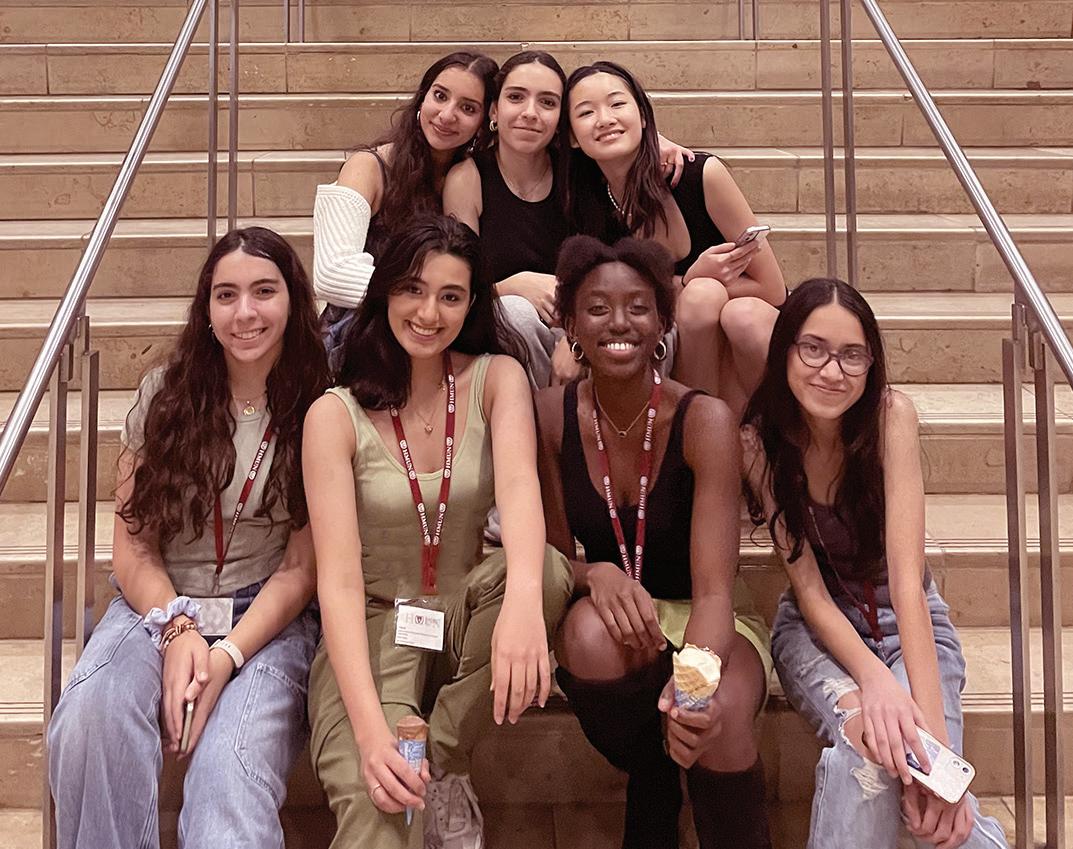
their own.
“I have to read my entire background guide and take notes, which turns into about a 60page document” Sharma said. “Then, I have to do outside research as well, and make a plan for committee.
For Harvard MUN in January, which is the national conference the club attends, Sharma was in a crisis committee. A crisis committee is a fast-paced committee that often emulates small organizations or boards, rather than larger general assemblies. Rather than representing a country, delegates take on the role of a character. Each delegate aims to assert their character’s viewpoint and end the conference having amassed the most social, political, or economic power.
“I also must write a crisis paper, talking about what I want to do in committee, and a regular position paper talking about the background of the committee,.” Sharma said.
For General Assemblies, however, preparation is a bit easier.
“I do research while writing my position paper,” freshman Natalia Salem said. “Then I do maybe an hour more of preparation.”
While Model UN can be time-consuming and involve a lot of research, conferences are also a great way to meet new people.
“My favorite part of Model UN is meeting new people, Salem said. “The people in my committees are always super nice and I enjoy getting to know them.”
During away conferences, there are numerous bonding opportunities. Students eat meals together, attend many of the conference social events together, and even prepare for the conference together. These activities are usually led by the club presidents and other leadership
“The club leaders are the true Model UN experts and do so much to support the members” Mosley said.
Many students have noticed an improvement in their diplomacy, teamwork, debate, and speaking skills after participating in Model UN.
“Model UN really taught me teamwork, and also confidence, especially for speaking in front of over 200 people,” Salem said.
The Comparative Vertebrate Anatomy class consists of multiple dissections, most notably that of a dogfish shark, and emphasizes the connections between the internal systems of many animals with humans.
“I really enjoyed learning about the inner functions and features of these organisms that seem so different from humans, but really aren’t,” Puri said.

She dedicated several months to the creation of “Animal Guts: A FunFilled Anatomy Coloring Book for Students in Middle School.” The book consists of handdrawn, labelled outlines of the anatomy of several animals, including a snake, butterfly, dogfish shark and human.
“I tried to think of animals kids would be interested in and that
they see on a daily basis, so it’d be more engaging,” Puri said.
She paired each organism is its own set of “fun facts” to further engage her audience, but also with the hopes of inspiring them to conduct their own research and delve deeper into what fascinates them about the animals.
Throughout the process of creating the coloring book, Puri focused on making it easily accessible – impacted by her visits to underserved schools in New Delhi, India.
“It’s something they wouldn’t really have the opportunity to learn about otherwise,” she said
Puri partnered with an organization that provides for communities and schools in India, sending them over 100 copies of her coloring book and giving students the opportunity to experience the subject that she found so inspiring.

Senior Anisha Puri spent months designing and publishing her coloring-book, which is now available on Amazon.
“It’s a fun thing for the students to do while they learn, and anatomy is something I’m passionate about.” Puri said. “So, it’s like a win-win.”
In the fall of 1970, 16 years after Brown v. Board of Education was enacted, Valencia Mack, now Valencia Yarbrough, enrolled at Hockaday for the sixth grade. She later became one of the first three Black Hockaday alumnae.
In early 1970, a friend of Yarbrough’s mother shared a newspaper ad for Hockaday admissions. With that encouragement, Yarbrough applied and was accepted to Hockaday.
In addition, Yarbrough’s friend Josette Kirven, a black student attending Hockaday, who made Yarbrough’s goals seem achievable.
“We did so many things that were so exciting to me as a student,” Yarbrough said. “It was different from my previous experience at the public school I attended.”
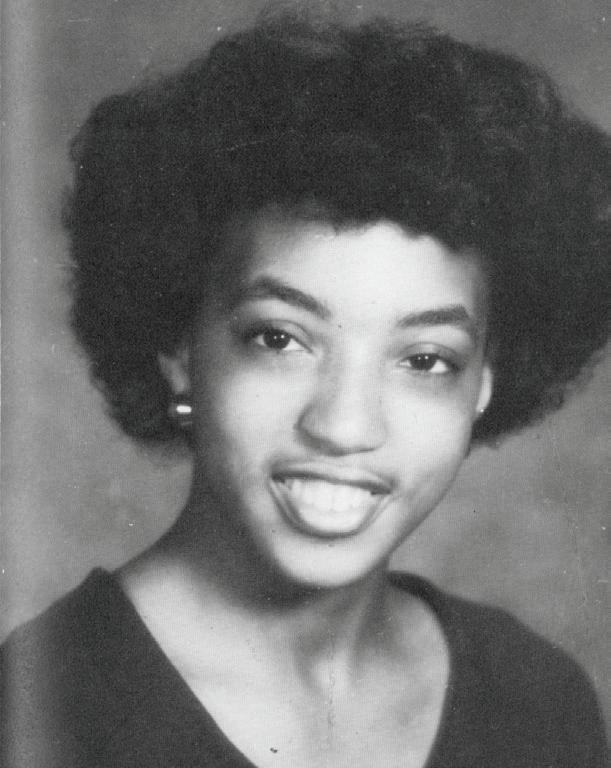
“Maybe because Jossette was at Hockaday it didn’t seem like an impossible dream,” Yarbrough said.
Yarbrough’s great aunt, “Aunt Teema,” worked at Hockaday in the 40s in the housekeeping department.
When Yarbrough came to Hockaday in 1970, there were two other black students, Kirven in third grade who enrolled in 1968 and Gina Lackey, who attended ninth grade. Lackey later left Hockaday to attend public school.

At Hockaday, Yarbrough enjoyed her hands-on experiences in her science classes.
She said she most enjoyed experimenting with circuits and raising rabbits.
In addition to her science classes, Yarbrough enjoyed being around likeminded people who shared her love for learning.
“I am grateful to have been admitted to a school where being smart was valued as a priority and where my friends and I shared a love for reading, exploring, learning, and challenging ourselves and one another,” she said.
“That like mindedness is what continues to bring us together 46 years after graduation and allows us to participate in race-focused and gender-focused workshops and discussions on Zoom, which we started during the pandemic.”
One thing that Yarbrough found challenging was her 30-minute commute from her home in Oak Cliff. With the distance between school and home, she said she found it hard to engage in extracurricular activities.
“I felt because of the drive that I could not fully participate in extracurriculars like I wanted because my parents would have to pick me up later and wait longer and make more trips to Hockaday, but I don’t think they would have minded,” Yarbrough said.
Yarbrough grew up in a middleclass Black community filled with Black professionals including doctors, lawyers and teachers. However, after seeing the large North Dallas homes of some her classmates, she didn’t want to invite anyone to her house.
“I felt I could not invite them to my two-bedroom house,” she said. “I was a junior before I invited anyone to my home.”
Yarbrough invited her friend in the boarding department, Jennifer, to
When you came to Hockaday, what was your first impression of the black community?

Alyssa Anderson, Form IV: “I came to Hockaday my freshman year. I came from a school where I was one of the only Black people in my grade. In elementary school, I was the only Black person in my grade and throughout middle school I was one of a few. So, coming to Hockaday it was nice to see an already built community of Black people that I could instantly connect with.”
Why did you want to be BSU president?
Alyssa: “I wanted to be able to continue fostering a welcoming community for Black students. I also wanted to be a part of the planning
spend the night.
“I got to know her outside of the school world,” Yarbrough said. “I felt like it was okay to let her get to know more of me.”
After Yarbrough’s graduation in 1977, she attended Stanford University. From what she remembers there was about 1,500 students in her freshman class at Stanford and only 77 women in the 1977 class.
One thing that was similar to Hockaday was the presence of different cultures.
“At Hockaday, I met students from all over the globe,” Yarbrough said. “I felt like Hockaday was a very multicultural environment and my freshman dorm at Stanford was the same.”
the Hockaday faculty. Yarbrough did not feel like a newcomer, however, because she served on the Alumnae Board and attended reunions.
Yarbrough is proud of the growth of the Black community at Hockaday.
“When there are 12 Black students ranging from Pre-K to 12th grade,

In 1994, Yarbrough was interested in coming back to Hockaday to be a teacher, however the timing did not work out, so she took a job at St. Mark’s teaching first grade. Yarbrough is still in contact with many of her Marksmen students.
“I attended a senior exhibition last week of one of my former first grade
Receiving a Hockaday education opened doors for me to be an exchange student with AFS in 1976, to attend Stanford in 1977, and to know first-hand what good teaching looks like. I am so glad I came.”
Valencia
Yarbrough Hockaday class of 1977
students,” she said. “I want to let them know that I’m still in their ‘village.’”
Yarbrough spent 19 years at St. Mark’s and then relocated to California.
In 2017, she and her husband moved back to Dallas, and she joined
there were not a lot of opportunities for interaction,” Yarbrough said. “I think now that there are more Black students, there are more opportunities for girls to get to know one another.”
Yarbrough not only sees more Black students, but more Black faculty, especially in Lower School.
“I think it is wonderful that we have such wonderful representation of black teachers in Lower School,” she said. “I hope that representation can grow in other divisions as well.”
Yarbrough is also happy to see the “wonderfully diverse collection of books” in the Hockaday libraries and classrooms.
The Class of 1977 started an endowment fund to increase the selection of African American books in the library.
“When I walk into the library every day, I see book covers of children and adult books of those who look like me,” Yarbrough said. “I wish that had been the case when I was A student, but those books were not being published then.”
process and use my creative ideas to host events and activities where we as BSU could share our stories and opinions with the student body.”
Amalia Evans, Form IV: “I wanted to be BSU president because I have seen the growth of the community through my years at Hockaday. I spent a lot of time trying to remember the ways in which the Black community uplifted itself, so when I got into high school and joined BSU, the Black community felt so much stronger. I realized at this point the importance of upholding the strength of our family and, once I got to my senior year, I wanted to implement my ideas to BSU to maintain all the hard work our past presidents have worked for.”

What do you hope students learn from Black History Month?
Alyssa: “I hope that other members of the Hockaday community can learn more about different important black figures throughout history that they may not have heard of before. I also hope that they can learn about different aspects of our culture and traditions through even just casual conversations.”
Amalia: “I want students to not only know the lives and stories of the large-named activists, but also of the hundreds of people who have done something revolutionary to help get us to the place we are today. My true hope for what students get out of black history month is education and dedication to learn more.”
What is your favorite part of being black at Hockaday, if you have one?
Alyssa: “My favorite part of being black at Hockaday is that I am able to share my voice in such a supportive community. Even though there are so many different types of people here, everyone is receptive to other’s perspectives which is something I think makes our school very unique. As a minority, I personally know what it is like to be judged or mistreated because of my skin tone. However, being in such a welcoming community like Hockaday, I am able to not only share these experiences, but also create change so that others like me won’t have to go through the same thing.”
Amalia: “My favorite part is the community and everyone’s ability to come together and have a good time. The time for us, as black students, to laugh, rant, and share stories with is definitely my favorite part.”
Thriving through transitions
Daylight savings and wellness tips for students
As the winter season comes to an end, it is time to recap the highlights of the season.
Soccer sets up for success at SPC
As the three-time reigning SPC champions, Varsity Soccer (HVS) has had an impressive winter season. Their team slogan, “Big Reputation,” hints at their SPC history.
They are 9-1 going into the tournament, winning all their home games. Their most notable win ended 9-0 against Oakridge on Jan. 30.
The team has a record of 55 goals scored this season led by senior Jaden Thomas and junior Annabel Callahan.
Head Coach Rodney Skaife focuses on drills that incorporate the whole team so the players know how to communicate and work together when it comes to games.
“We are working really hard at all of our practices and games to put our best effort towards SPC,” sophomore Kaitlyn Adams said. “It is really important to us to carry on the legacy and win another championship.”
Basketball braces for upcoming tournaments
Basketball 7-5 for the season heading into the SPC tournament.
The team is led by new coaches this season: Head Coach Lauren Moss and Assistant Coach Devin Darnell.
“Coach Moss keeps us on a tight schedule, so we are productive in improving our skills and keeping up with conditioning,” sophomore Rabel McNutt said.
With five freshmen on the roster, the team is determined to improve their skills and expand their abilities.
“This year we have started watching our film after every game to see what we need to work on,” senior captain Ashna Tambe said. “We also watch lots of film from playing other teams to decide how to defend them before games.”
McNutt explains the teams bonding off the court.
“We have a great team dynamic on and off the court, seeing as the majority of our players are freshmen has helped us become a lot closer as a team,” McNutt said.
Swimming season recap
After competing in five meets this season, Hockaday’s Varsity Swim Team has become closer and improved their skills.
During those meets, many members of the team have found much success in their times and achievements. While they are not competing, the swim team spends hours practicing at the Hockaday pool. Their practices often begin with swimming 400 yards, followed by many 50 yards laps. They all practice together and typically practice strokes unless a meet is coming up, in which they practice diving into the water. The team also spends much time getting together to bond. Their bonding includes team dinners at Torchy’s Tacos, and two events hosted at senior captain Margaret Thompson’s house.

“At the beginning of our season we had a white elephant party and we also decorated holiday cookies,” said sophomore swimmer Anya Tewari.
Diving reflects as a team
Although they have only competed in one meet, the team continues working hard.
Before entering the pool, the team does many ab and cardio exercises along with stretching. Then, they all practice different dives.

Senior captain Avery Clarke said that every person on the team has learned at least one new dive this season.
The team practices all season, and they are currently working on finalizing lists for what they are going to compete in during SPC.
With five returning divers, the team has grown since last year. They have begun focusing on perfecting techniques at this point in their season. With all of this effort being put into diving, the team spends lots of time together away from practice.
“We are very close knit, like a family,” said sophomore diver Abby Snyder. “Lots of times
we have breakfasts after Saturday morning practices at Chick-fil-A or First Watch.”
The team hopes that everyone will come together to support diving during SPC, whether they are in the stands, in the pool or cheering from home.
“I know everyone is capable of so much, so I hope they can stay confident in their abilities and perform how they do in practice at SPC,” Clarke said.
students and staff share their takes on rules, teams and more surrounding their
Whether you were born into a family of diehard Cowboys fans, enjoy band wagoning onto the new hit team or have only heard of the Super Bowl, American football has remained the most well-known sport in the country for decades. Despite the millions of fans who watch professional and college football, only a small percent of them claim they follow the sport closely throughout each season.
According to a survey conducted by Pew Research Center, 62 percent of Americans say they follow professional or college sports not too or not at all closely while only 16 percent follow them extremely or very closely. Although this statistic did not ask Americans the specific sport, based on the statistics, one could assume across the 113 million viewers of last year’s Super Bowl, few of them were watching all that closely.
Super Bowl outcomes by comparing dozens of statistics and throwing around a lot of confusing terminology. If you have no idea what they are saying, want to impress your dad or just want to learn more, listen to Cohen’s opinions on all things football:
Q: When did you start watching football?
A: My family is a big football family, so I’ve watched college football my whole life. For professional football, I’ve always been a Cowboys fan, but I didn’t really start watching a lot of NFL until eighth or ninth grade.
“ I wish she’d chosen a better team to be associated with, like the Cowboys.”
-Caroline Cohen
Even junior Caroline Cohen, who has watched almost every regular season game, wouldn’t go as far as to label herself as a superfan.
“It depends on what you would define that as,” Cohen said. “By watching almost every game, I learn a lot, but there’s still a lot I don’t know.”
While Cohen believes she hasn’t reached the title of “superfan” yet, after knowing her for years, I can confidently say that she knows more about football than many on Hockaday’s campus. So, as the Super Bowl approaches, football analysts reflect on this season and predict
Although football is undoubtedly the most popular sport in America, fútbol takes the title for most popular sport in the world. According to a survey conducted by World Population Review, soccer has roughly 3.5 billion fans, almost half the world’s population, spanning across the globe. Similar to many soccer fans, junior Ella Williams began following the sport after the Men’s World Cup in 2022.
“My teacher for History of Art would sometimes let us watch certain games,” Williams said. “Then, one thing led to another, and I ended up watching the whole tournament.”
After the World Cup ended, Williams, along with many other World Cup fans, turned to the Premier League to watch the sport.
“I started to watch soccer analysis videos that cover tactics and player selections,” Williams said. “It’s so much fun to learn about the reasoning behind lineups, positions and passing.”
For Williams, this was when she discovered her favorite team, Manchester City. Here are some of her opinions on players, rivalries and more:
Q: Favorite players on Manchester City?
A: I really like Phil Foden, Bernardo Silva, Nathan Ake and Kevin Debruyne. For Foden, I love how technical he is, and his touch is just beautiful. For Silva, he is so versatile and seems to everywhere on the pitch at once.
Q: Who is someone on the team you believe deserves a lot of recognition?
A: Definitely Pep Guardiola. He is the manager of Manchester City and is the epitome of an innovative, tactical manager. He’s done an amazing job at changing his tactics based on new additions to each of teams he’s worked for.
Q: Aside from Manchester City, what other team do you think deserves a lot of recognition?
Q: Any predictions for the Super Bowl?
A: Personally, I think the refs have been very biased when it comes to the Chiefs, making a lot of calls that were very questionable. Plus, Taylor Swift attracts so much attention, so I don’t think the league would let the Chiefs lose. Even though I think the Chiefs will win, both teams are loaded with great players skills wise.
Q: What angers you the most about “fake fans” of football?
A: The only thing that sometimes angers me is bandwagoning. The only acceptable reason to do that is if there’s a cute guy on the team, which I would understand.
Q: What’s your take on Taylor Swift in the NFL?
A: I like when they show Taylor on the big screen because it’s cool to see her off the stage. But I hate the Chiefs, so I wish she’d chosen a better team to be associated with, like the Cowboys. I also think she would’ve been perfect with Joe Burrow if he wasn’t engaged. As for the media, it was cool for the first month, but now it’s just annoying. I don’t care that much about her or Travis Kelce for it to be clogging up my Twitter all the time.
A: Earlier this season, I enjoyed watching Brighton. Robert De Zerbi is the manager, and rumored to be a potential Pep Guardiola replacement, which I think could be interesting. His players have really good positioning and the passing and dribbling skills of Mitouma is always fun to watch.
Manchester City has clearly acquired a lot of fans in the past few years due to their level of success. However, the most impressive type of superfan is the one who never yields support even when their team fails for multiple seasons.
Upper School English teacher Benjamin Gerdts has been a fan of the Tottenham Hotspurs for majority of his life.
“I started watching soccer when I was a kid, and the World Cup was on,” Gerdts said. “The Women’s World Cup win in 1999 really was huge for that.”
Similar to Williams, Gerdts enjoys listening to podcasts, watching games and talking with other people about the sport.
Q: What is a rule that a lot of “regular” fans don’t really pay attention to?
A: Obviously, offside is one that drives me crazy

Q: What is a rule that a lot of “regular” fans don’t really pay attention to, or just completely forget about in football?
A: When an offender fumbles the ball in the end zone, right before they’re about to score, it’s a touchback for the other team. A touchback can happen a lot of ways, just most people forget about that rule
Q: Besides the two Super Bowl contenders, what other team do you think deserved a lot of recognition this season or a shot at the Super Bowl?
A: Since I’m a fan, obviously the Cowboys. If Trevon Diggs and Vander Esch hadn’t been injured, we would’ve had a great shot at getting in. But of course, as a fan I’m always going to say that next year will be our year, so we’ll see.

that a lot of people don’t understand. Also, that the ball has to completely cross a line to be out of bounds or a goal. Handball is a rule that is frustrating to all fans of soccer, since it seems that referees change that rule every game.
Q: Favorite player?
A: I’ve always loved Harry Kane because he’s so creative and skillful without being physically dominant. He’s such a smart player, and he played for my favorite team for a long time.
Q: Besides Tottenham, what other team do you think viewers should look out for?
A: The US Women’s National Team is in a very interesting phase of its existence right now. They used to be dominant and have recently fallen from the top a bit as other countries have improved. They just hired a successful English coach, so it will be interesting how she works to return the squad to greatness in this next cycle of World Cup and Olympic qualification.
Q: What’s your favorite part of soccer?
A: Soccer is so fluid and complex with all the movement and strategy. It’s not stop-andstart like football or basketball. It just keeps going. There are no timeouts. It evolves over a long period of time. It’s like the novel of the sports world.
Daylight Saving Time (DST) is the practice of moving an hour of sunlight from the morning to the evening by advancing clocks. In 1916, Germany was the first country to use DST. The U.S. soon followed suit, adopting DST in 1918 under the Standard Time Act. This measure was aimed to save fuel costs during World War I by adding an hour of sunlight to the day. Today, over 70 countries observe DST.
going to bed 15-30 minutes earlier each night leading up to March 10.

This year, Daylight Saving Time starts on March 10. In March, many people worldwide will be losing an hour of sleep, and, in order to adjust, many people start gradually preparing ahead of time. Some professionals recommend adjusting your clocks earlier and
With the seasons changing, everyone is busy trying to adjust to new temperatures and the new semester. As we enter the beginning of the second semester, don’t forget to take care of yourself.
Remember: we’re more than halfway there! To help get you through the final stretch, here are three wellness tips that might make your days smoother: Following a routine sleep schedule is one of the most important aspects of your health. Consistency in your sleep schedule helps regulate your circadian rhythm. The circadian rhythm is essentially your internal alarm clock that manages cycles of alertness and sleepiness by responding to light changes. To

Follow a consistent sleep schedule
help adjust your sleep schedule into a routine, try journaling a few minutes before bed. Journaling can be as simple as writing down your thoughts and feelings. According to the University of Rochester Medical Center, journaling can help people gain control of their emotions to improve their mental state. Another way to implement healthy behaviors into your lifestyle is to
drink more water.
Water intake is an individualized number as it depends on many factors but has many benefits. Increasing your water intake can help clear skin, increase energy levels and brain function as well as offer many other health benefits.
President Lyndon B. Johnson designated February as Heart Health Month in 1963, aiming to promote Americans’ health. Despite this, deaths caused by coronary disease have been increasing more than ever. However, society has been increasingly focused on fixing this problem by improving their lifestyles. At Hockaday, the Fitness Center and P.E. classes are working to establish good heart health practices from a young age in students.
“After students participate in a fitness assessment, we can determine how healthy a student is based on predetermined metrics,” Hockaday Strength and Conditioning coach Elia Stanfield said.
In Upper School, students take running tests like the FitnessGram PACER test, designed by the Cooper Institute in Dallas. They also do weight exercises, including bench press and body weight exercises, to increase muscular endurance. The combination of these two can be good markers of a person’s heart health.
“We aim for students to be a little bit above the minimum [of set metrics indicative of a healthy heart],” Stanfield said.
Outside of the gym, fitness and

cardio-respiratory health can be roughly determined through everyday activities.
“If you can walk up a flight of stairs without getting winded, then that’s a really good indicator of heart health,” nurse Erika Herridge said. “It tells you that you’re not putting too much pressure on your heart.”
Diet plays an equally large role in heart health. Good eating habits reduce blood cholesterol and the danger of coronary artery disease. Foods high
in saturated fat have been linked to worse artery buildup, while vegetables have generally been regarded as beneficial.
Sage Dining attempts to help students make healthy food choices by classifying foods with three green dots. The healthiest foods are dark green, foods that are healthy in moderation are normal green and foods considered unhealthy (in large amounts) are light green.
“You don’t have to restrict yourself from eating fried food. Just eat it occasionally and have an overall balanced diet,” Herridge said.
While poor exercise and diet have perennially been a threat to a healthy lifestyle, energy drinks are a newer product that has been linked to cardiac issues.
Celsius, a popular brand of energy drink among students, has 200 mg of caffeine per can, while the same amount of black coffee only has around 130 mg of caffeine. Studies and doctors recommend that students
and teens drink no more than 100 mg of caffeine per day. Drinking one can exceed the recommended daily limit, but some students drink more.
“On a bad day, I’ll drink two cans of Celsius or Red Bull and two cups of coffee,” sophomore Fendley Obert said.
That’s 660 mg of caffeine, over six times the recommended amount.
Caffeine causes an increase in heart rate and blood pressure. While some people can tolerate this in moderate amounts, too much caffeine can be fatal. Drinking it consistently can also disrupt sleep, leading to reduced hours of rest, which negatively impacts the body and heart.
“Some students drink energy drinks after school and then they can’t go to sleep,” Herridge said. “It’s just a vicious cycle. And because sleep is so important for the brain and restoring the cells in the body.”

Without sleep, even the healthiest of lifestyles can prove ineffectual for heart health, making energy drinks a direct and indirect enemy to heart health.
Tiktok Made Me Buy it
Why microtrends are problematic
“The link is in my bio!” “You can find it in my Amazon storefront!” These are phrases that have become common sales pitches by content creators on social media.
Open TikTok and you have a new “Shop” tab at the top of your screen. This is one of TikTok’s most recent updates, another way influencers and brands can encourage consumerism in the app. Now more than ever, influencers are living up to their name as they promote an atmosphere of
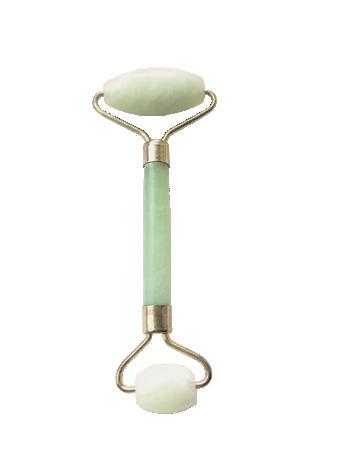
When a certain vibe or aesthetic starts trending (like “clean girl,” “vanilla girl” or “quiet luxury”), TikTokers everywhere rush to buy an ice roller, a new pair of Uggs, a Stanley cup or a designer
handbag. While I think some of these trends are cute, and I have bought my fair share of Stanleys and perfumes, most of these products are expensive. I have stopped purchasing anything I see on TikTok because I know that I will end up throwing away the product. Maintaining this influencer lifestyle of huge hauls and shopping sprees is just not realistic or manageable.
Junior Emmy Roberts has bought a “Grande Lash Heat Curler” and “Veyes Lashes” she also says she “despises TikTok shop.” Roberts even has the hashtag blocked because, “the ads are constant.”
Influencers persuading their followers to buy products has become a new form of constant advertising on social media platforms. They have created a fear of missing out (FOMO) if you don’t buy the products, therefore encouraging you to buy unnecessary things.
However, it’s not only about buying from TikTok shop or an Amazon storefront page. Influencers also convince us to wear bows or the “coquette” aesthetic, leading us to buy items that will inevitably go out of style in a few months.
Roberts agreed, adding that, “it’s so hard to keep up with all of the trends because they’re constantly changing so fast, you cannot keep up.”
Remember cow print and the “VSCO girl” aesthetic? No one wants to wear something from those trends now, because it’s seen as embarrassing and childish. I personally just went through my
The issue with award show monologues like Jo Koy’s
closet and got rid of so many clothes that are out of trend and out of fashion. It’s exhausting, so I have started to buy clothing that I can see myself wearing in a few years, no matter what is trending at the time.

Many of these trendy items are often bought often bought from brands like Amazon, Zara, Shein and other fastfashion companies. Many of these companies are criticized for exploiting employees, unethical working conditions, and contributing to climate change.
This surge of influencers promoting consumerism is a good reminder to think before you buy and try not to fall into the trap of TikTok trends, as they are inevitably a waste of money.
Ihave Valentine’s Day plans this year. And this is not the beginning of another malicious anti-Valentine’s Day scheme from the sagacious singletons, nor a selfish attempt at reclaiming the holiday in the name of feminism.
Simply put, my plans are to appreciate the day for what it is...but what even is Valentine’s Day?
Historians believe the holiday holds origin in the Roman fertility festival Lupercalia, which was converted to St. Valentine’s Day after Pope Gelasius I forbade the celebration. According to a common legend, St. Valentine’s feast day is associated with romance because he secretly married couples to spare the husbands from war and separation from their wives, all in the name of love (and rebellion against the emperor’s orders).
the holiday’s crass consumerism. Yes, the holiday has probably boosted the flower and teddy bear and chocolate markets; but who says these are the only ways to express our love? According to the University of Alabama Birmingham Medicine, physical demonstrations of affection can improve some health factors and reduce risks of heart disease — and according to me, these cost-efficient demonstrations of love can also help your relationship more than any Hallmark card can!
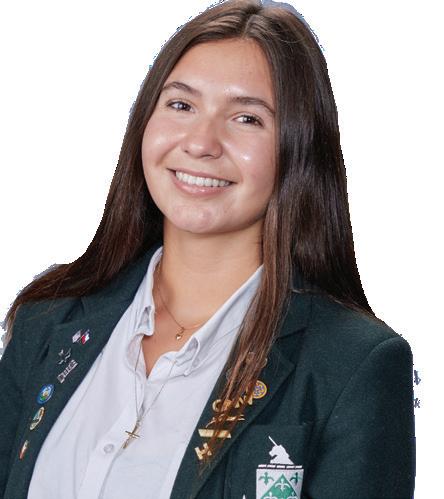
While Valentine’s Day has recently expanded to include the celebration of love between friends (Galentine’s Day) and family, it seems the holiday’s haters struggle most with accepting its innocent historical intent and resort to bashing the idea altogether. When I say “haters,” I exclude the singles who admittedly find Valentine’s Day alienating or see it as a reminder of their loneliness. I refer mainly to those who believe they are “above” Valentine’s Day – those who think every day should be a celebration of love or those who think they don’t need a day to remind them that they love their partner.
Let’s take the most common reason for hatred:
Feeling the touch of a human activates areas of the brain that handle empathy, emotions and certain social behaviors, stimulating positive responses that strengthen bonds. And what’s so wrong with a holiday that reminds us to spend time bettering ourselves and our connections to other humans?
After all, our calendars are filled with special days that remind us to spend time on something — so why not take 24 hours to acknowledge each other?
With my new plan in mind, I want to bring back the days of crafting valentines for our classmates. At the height of the academic season, we sometimes forget to appreciate our loved ones, and making valentines doubles as a stress-relieving, good-for-the-soul activity and an awesome way to celebrate love.
While I once was the girl who hated Valentine’s Day and didn’t subscribe to the so-called outdated, narrowminded views of romance, the holiday has made its way into my heart — and Cupid’s here to stay.

JANE TATEN
“This is my Avengers Endgame.”

KATE GONZALEZ
“I don’t know if I will survive this illness. Or this boy.”
The minute Jan. 1 is over and done, a ludicrous plethora of over-emphatic teddy bears, supersized chocolate hearts and balloons begging you to “be their valentine” suddenly descend on supermarkets, stores and all public spaces previously considered habitable. No longer can you string along that guy that you just might be interested in.
Suddenly, you are faced with a choice: to be or not to be, to love or not to love, to become one half of an overenthusiastic couple or a unloved, hopeless single.
Valentine’s Day creates a month-long atmosphere of loneliness, or for those of you in premature relationships, unreasonable expectations surrounding your romance, which will undoubtedly be crushed by Feb. 14.
the middle of the day?
A significant other who truly values your presence in their life should make that known 365 days of the year, as should you. This holiday allows us to accept the bare minimum when it comes to gestures of love and appreciation, placing the expectations of an entire year onto one over-hyped and disheartening day.

So, why do we cling to this ridiculous charade? Perhaps, it is out of a need for performative love. As teenagers, we feel social pressure to engage in romantic relationships and thus, fall prey to the Valentine’s Day narrative that has been shoved down our throats since elementary school.
This holiday, which forces young lovers to measure their relationship with trivial gifts like flowers and chocolate, indoctrinates them with a false narrative: that a true romantic relationship can be encapsulated by the events of a single day.
After reading this far, you might think I do not believe in romance and that I am some unfeeling person who does not value relationships or love. In reality, it is just the opposite. I believe that placing the weight of a relationship on one holiday takes the beauty out of the small gestures that should abound in long-term relationships. What about the time they refilled your car tires before you even asked? That time they brought you snacks after finals? The little text they wrote you in
In an anonymous survey of Dallas high school students, sixty-six percent admitted to feeling societal pressure to celebrate Valentine’s Day. Instead of forcing love onto high schoolers, Valentine’s celebrations should also encourage celebrating platonic relationships.
Galentines, a celebration of female friendship, should be highlighted by the media, just as much, if not more than romantic relationships.
Think about it, if, instead of stalking couples relationship posts, or wistfully watching romantic comedies, singles across America celebrated their friends and felt satisfied without a romantic partner, then who would care enough to buy those roses, eat the cheap chocolate, or flaunt their new relationship?
Large corporations profit off our dissatisfaction. If they convince us that there is some perceived “hole” in our lives, we are more likely to buy their meaningless trinkets in the search to feel loved. We are also more likely to run to find love, hoping that by finally having a “valentine,” our loneliness will somehow evaporate.
Let’s get this straight: no product, post, or gift will ever satisfy us. The only thing that will end this loop, is finding satisfaction with our lives every day, with or without a partner.
Valentine’s Day does not exist to celebrate love. Instead, it profits off its destruction.



JORDAN INNERARITY
“Wait, when did we get a fish?”
RAIYA CLAYTON
“Timothee Chalamet’s face looks like a bike seat.”
JEFF HULBERT
“I wouldn’t give you a detention if you were bald.”
fEDITORS-IN-CHIEF
Kailey Bergstedt, Caroline Bush, Harper Harris & Bennett Trubey
JADE EDITORS
Aadya Kuruvalli & Melody Tian
WEB & SOCIAL MEDIA EDITORS
Hanna Asmerom & Anjy Fadairo
NEWS EDITOR
Amitha Nair
ARTS & LIFE EDITORS
Alexandra Dassopoulos & Alexa Muñoz
FEATURES EDITOR
Danya Risam-Chandi
SPORTS EDITOR
Elizabeth Truelove
OPINIONS EDITOR
Shreya Vijay
PHOTO, GRAPHICS & CASTOFF EDITOR
Elle Myers
STAFF WRITERS
Larkin Clouston
Shifa Irfan
Cece Johnson
Anya Aggarwal
Caroline Ballotta
Jessica Boll
Lang Cooper
Melinda Hu
Audrey Liu
Sophia Lou
Emily McLeroy
Sarah Moskowitz
Leyah Philip
Anika Shah
Mary Bradley Sutherland
Aadhya Yanamadala FACULTY ADVISER
Kristy Rodgers
The Fourcast is written primarily for students of the Hockaday Upper School, its faculty and staff. The Fourcast has a press run of 600 and is printed by Midway Press. It is distributed free of charge to the Hockaday community. The staff reserves the right to refuse any advertising which is deemed inappropriate for the Hockaday community. Opinions will be clearly marked and/or will appear in the views section. Commentaries are the expressed opinion of the author and do not necessarily reflect that of The Fourcast staff, its adviser or any other member of the Hockaday community. The Staff Stance on the views page reflects the position of The Fourcast staff, but not necessarily the position of the Hockaday administration or community. The Fourcast staff determines the content of each issue and strives to work as independently as possible in producing the student newspaper, but the content is subject to prior review by the head of Upper School, the communications director and other members of the Hockaday leadership team. Letters to the editor and guest columns are welcome and should be addressed to the editor-in-chief. Only signed pieces will be published. Corrections and clarifications from previous issues will be found as designated in the news section. Any questions or concerns should be addressed to Editors-in-Chief Kailey Bergstedt at kbergstedt24@hockaday.org, Caroline Bush at cbush24@hockaday.org, Harper Harris at hharris24@hockaday.org or Bennett Trubey at btrubey24@hockaday.org.
The staff editorial is an unsigned piece representing a consensus of opinion among members of The Fourcast editorial board regarding a current issue.
Whether you were watching live or on social media, in the last few weeks, most of us have seen Jo Koy’s offensive jokes from his Golden Globes monologue Jan. 5.
For as long as late-night comedy has been airing, comedians have always walked a fine line between offensive and funny. However, recently at award shows, comedians have failed to recognize the audiences they are speaking to, resulting in jokes that are no longer even funny.
In the past, the Golden Globes has been hosted by Ricky Gervais, Tina Fey, Amy Poehler, Andy Samberg, and Sandra Oh. Their monologues were funny, and they very seamlessly weave in jokes of all varieties. These monologues are excellent examples of what to strive for. Jo Koy’s on the other hand… not so much.
His controversial joke about “Barbie” sparked severe criticism, as it highlighted why the movie was made in the first place– to break stereotypes about what it means to be a woman. As an all-female staff, we find such
Taylor Swift, calling her out for her relationship with Travis Kelce. Swift was clearly uncomfortable, and the camera cuts to her pursing her lips and taking a sip of her champagne.

Koy was given two weeks’ notice to write and rehearse his monologue, and that is evident in his performance.
He started off with the basic formula that each comedian takes at an award show - first cracking a joke about actress Meryl Streep. The jokes that followed about the length of the movie “Oppenheimer” were also not well received, and the camera often cut to the director of the movie, Christopher Nolan, who is seen on multiple occasions shaking his head in disbelief.
Then, Koy stepped into some shaky territory, making a joke about “Barbie”, comparing it to “Oppenheimer.” Describing the movie as one about a “plastic doll with big boobies,” Koy’s joke was completely offensive and uncalled for, showing his ignorance.
jokes in today’s day and age to be very offensive. Koy’s remarks were clearly undermining the success that “Barbie” has achieved over the past year.
However, that was not his only joke about Barbie that night. He also made a joke about the transition that Barbie undergoes in the movie when she moves into the real world, comparing it to what casting directors call “character actor.” The term refers to someone who plays weird and eccentric roles as opposed to lead roles. The joke is extremely offensive because it implies that only people with so-called “perfect bodies” are fit to act in lead roles, which is also not true today.
Koy deflected quickly after the audience’s reactions died down saying “some of these I wrote and some of these other people wrote.” Koy also made a joke about pop music artist
While the rest of the jokes were not as offensive, Koy’s monologue garnered intense criticism from news media outlets and social media users in the following days. However, it is important to note that comedy is not the issue here. A huge part of being a great comedian is understanding the audience you are catering to. For example, describing the highest grossing film of the year as a movie about a “plastic doll” is not a good move. Looking back on 2023, it was truly a year for women- with Taylor Swift, Beyonce, “Barbie”, and more making history. Taking this into account, Koy’s jokes about the movie are very offensive, and it also shows his outright ignorance of his audience- in which women primarily comprise.
At award shows since then, such as the Critics’ Choice Awards, host Chelsea Handler did a great job of keeping a good balance between her jokes, which at any point in her monologue were not degrading. It’s this kind of hosting that people are looking for, and it makes people want to watch.
In a world where we are constantly plagued by one form of bad news or the other, it is important to have comedy, and to have moments where we can just laugh at what’s going on in the world. But comedy needs to be clearly distinguishable from plain offensiveness, and that’s where Jo Koy seemed to have an issue in his monologue, whether he wrote it or not.
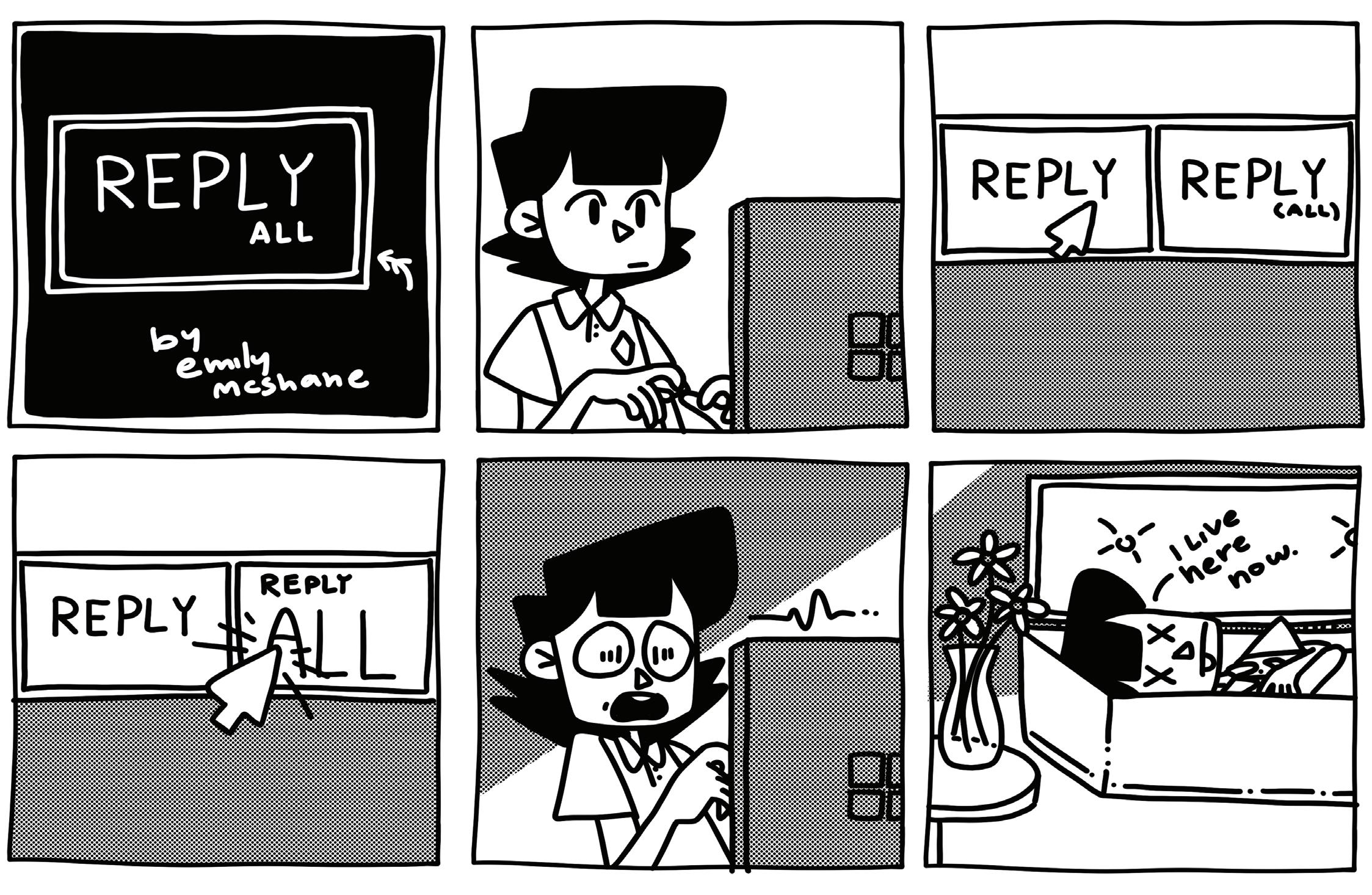
Every year, we ask student to design hearts for those they care about




 By Elle Myers, Photos and Graphics Editor
By Elle Myers, Photos and Graphics Editor


